WHAT’S INSIDE
NEWS: SHS voucher program extends in SUCs, LUCs
EDITORIAL: Chapter Closed...
FEATURE: Agora page
SCITECH: Solution From Addiction page 14
SPORTS: USTP-SHS Men’s Basketball falters grip on final berth

SHS voucher program extends in SUCs, LUCs
by Mary Allaine Cabot
To ‘prevent any displacement of SHS learners’, the Department of Education (DepEd) vowed to continue the voucher program for Senior High School (SHS) students enrolled in state university and colleges (SUCs) and local university and colleges (LUCs) for school year 2023-2024.
DepEd noted that the Senior High School Voucher Program (SHSVP) will be extended to Grade 11 students enrolled in SUCs and LUCs for the current school year until they complete their Grade 12 in SY 2024-2025.
Students of University of Science and Technology of Southern Philippines - Senior High School (USTPSHS), a SUC affected by the discontinuance of the said program expressed hope with the recent announcement.
Euhann Cruz II, a Grade 11 student of USTP-SHS expressed his hope for the voucher program extension in SUCs and LUCs, stating that the initiative will significantly alleviate the financial burden, especially for those facing economic challenges.
“Personally, it gave me a sense of hope and assurance for a smoother educational journey, thereby alleviating the strain not only on us, students, but on our families as well,” Cruz said in the interview.
continue on page 2
Population of Senior High School Students in USTP CDO (AY 2023-2024)
are

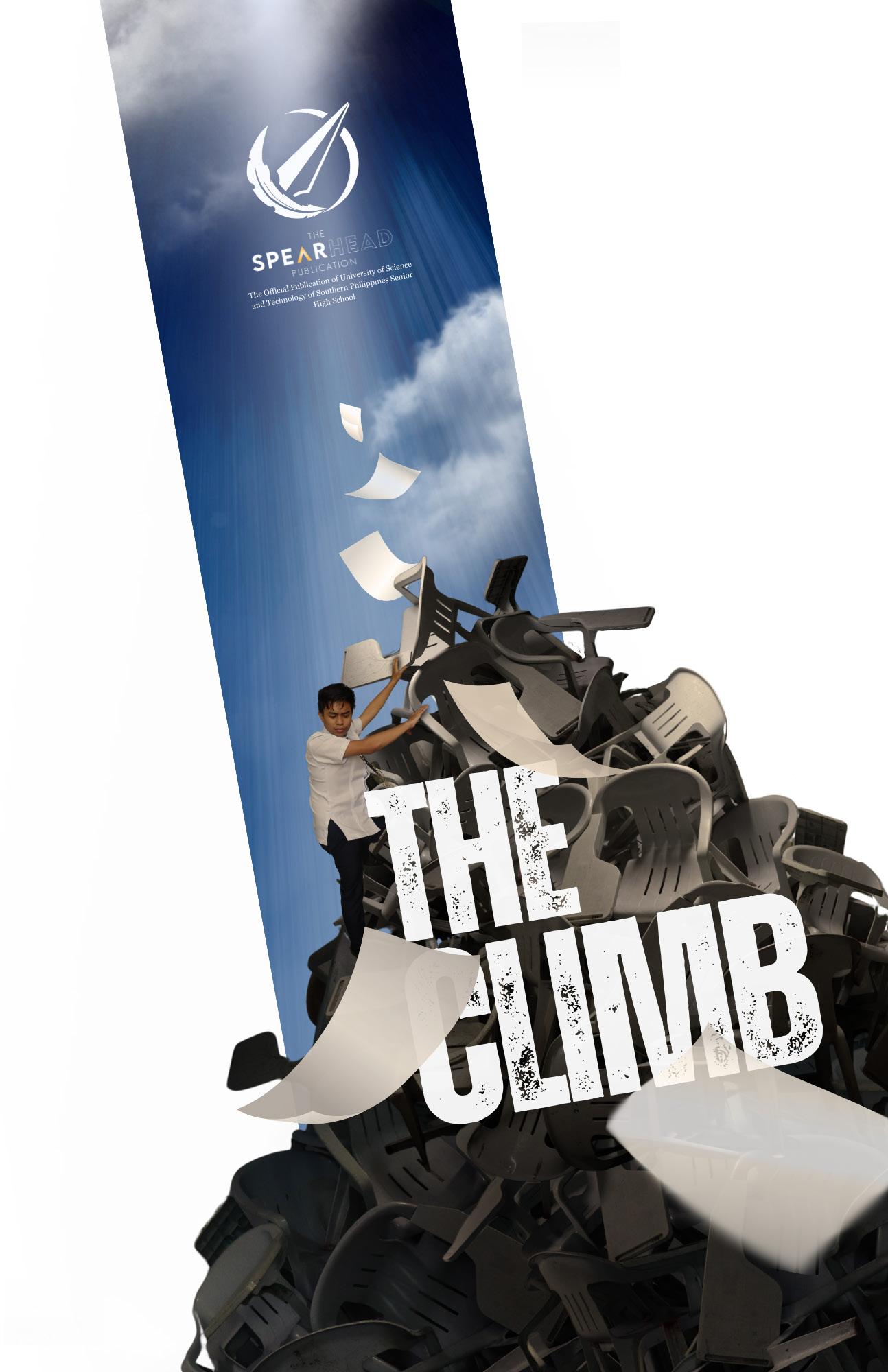
NEWS
8
CHECK IT OUT FOR MORE STORIES page 15 page 2 page 4 Vol. 1 No. 2
There
51.4% (209 students) of Grade 12 students and 48.6% (194 students) of Grade 11 enrolled students in the first semester of the academic year 2023-2024 at the university.
2 NEWS

USTP-SHS students express concern over insufficient classrooms
by Leonah Leaf Campilan
University of Science and Technology of Southern Philippines - Senior High School Department (USTP-SHS) students conveyed their disappointment regarding the still unsolved problem of having insufficient classrooms in USTP for both year levels.
Only 6 classrooms are utilized for 12 sections; Grade 11 students have classes during the morning, and the Grade 12 students use it in the afternoon until evening, resulting to only 6 hours of learning compared to other senior high schools that have whole day classes.
On weekends and examination weeks, college students from the College of Engineering and Architecture (CEA) and College of Science and Technology Education (CSTE) occupy the said rooms.
“It has an impact on our learning environment when it comes to disorganized schedules from the faculty for the availability of classrooms... We’ve had cases in the past where our instructor was unable to hold a lecture in our section due to a lack of rooms for face-to-face lectures because other college departments would use our classrooms, therefore we’ll be doing the lesson online,” Hannah Aque, a Grade 12 student, said in an interview.
She added it was frustrating and a hassle, especially during the pre-faceto-face classes last school year, because there were times that they would revert to having online classes at the last minute despite them being at campus already because of the unavailability of the classrooms.
“Gaka-affect ang academics in my opinion...and dili baya tanan makaapil ug online class,” an anonymous Grade 11 interviewee also said. (“It affects our academics, in my opinion... And not everyone can attend online classes.”)
Both students suggested the SHS department to maximize and invest in more classrooms for a more condu cive learning environment without restraints, and this can benefit not only SHS students, but the college students as well.
Currently, there are 194 Grade 11 students, and 205 Grade 12 students in the USTP-SHS department who have to share the 6 classrooms.

DROP NOW! EVERYTHING


LCRP exams reveal low scores among USTPSHS students
by Leonah Leaf Campilan
The University of Science and Technology of Southern Philippines - Senior High School Department (USTP-SHS) conducted the Learning Continuity and Recovery Plan (LCRP) examinations among the Grade 12 students to bridge and address the learning gaps in the
system, showing a low passing rate among the 205 students.
Only 18 out of 205 passed the 50-item exam following a 70% passing rate, with 3 students getting 38 points, 3 students got 36 points, and 12 students got 35 points. The lowest score identified was 2 students obtaining 13 points out of 50, and 1 student getting 14 points in the 45-minute online examination.
“I can say na average ang level of difficulty sa LCRP exam,– not because intelligent ko but actually ang nigawas ang LCRP exam is nalesson man pud sa whole grade 11 na time. Naa lang gamay nanggawas na I feel like wala na lesson pero still connected ra pud siya sa mga topic na nadiscuss sa grade 11. Personally, ang mga math-related questions ang
a bit hard for me but overall, it was an average exam lang in my perspective [I can say that the level of difficulty of the LCRP exam was average,– not because I’m intelligent, but actually the coverage was discussed already back in Grade 11. There were some items that I feel like it wasn’t discussed, but it was still connected to the topics discussed in Grade 11. Personally, the math-related questions were a bit hard for me but overall, it was an average exam in my perspective,] Alona Añon, a Grade 12 student expressed in an interview. She added the best way for the department to improve this matter was to consider reviewing and revising the curriculum to ensure alignment with exam expectations, and for the students to really take the LCRP exams seriously since it reflects the whole USTP-SHS department.
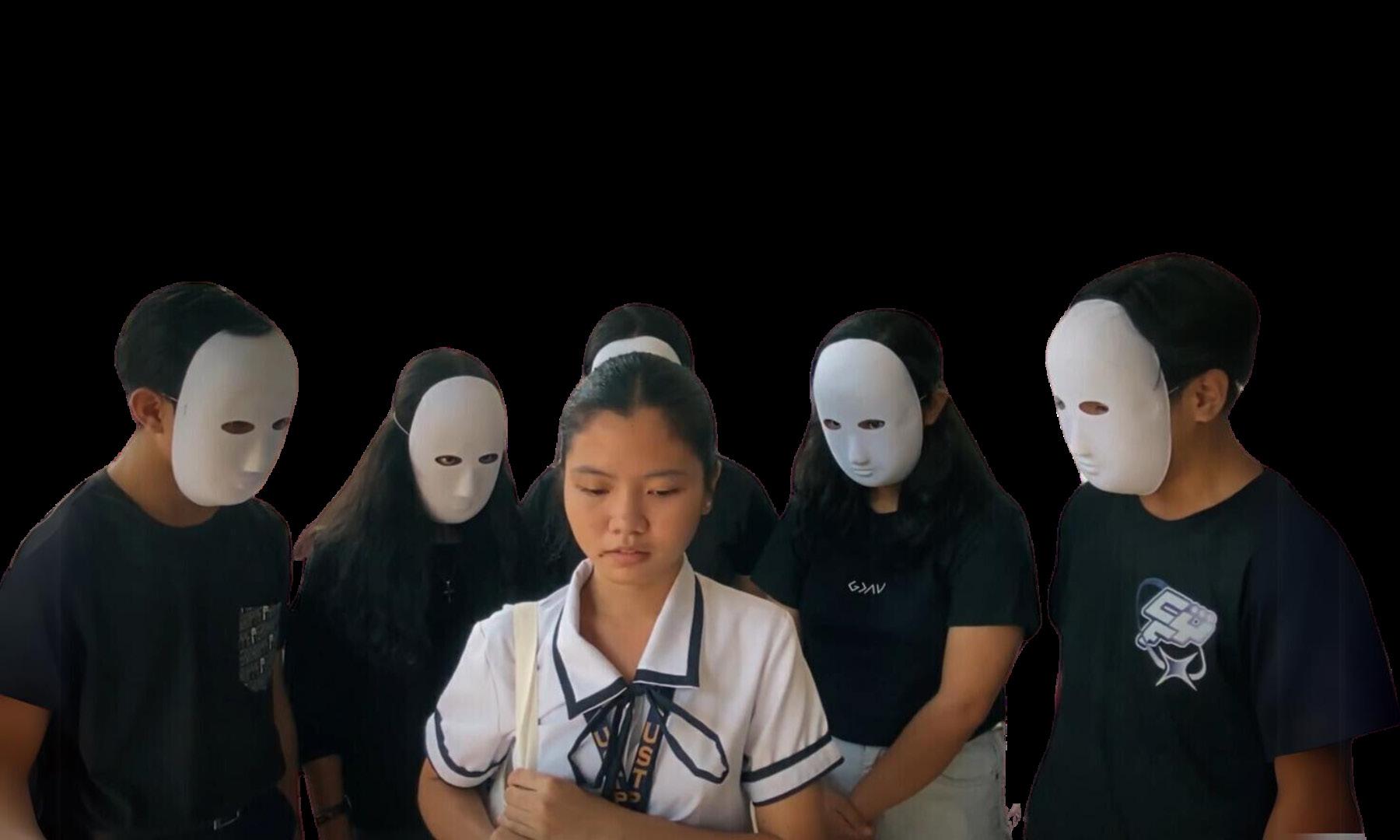
USTP Cagayan de Oro Campus Enrollment Data
(First Semester, AY 2023-2024)
“LCRP for SHS is based on NAT since we do not have board exams. NAT evaluates whether the competencies necessary to be learned are learned by the students,” Ma’am Leah Tabosares, Academic Head of USTP-SHS stated. She emphasized the LCRP exam is required for the students’ clearance, and that their scores will be used to plan out programs and interventions to improve the teaching-learning process in the university.
To address this matter, Ma’am Tabosares said the department is planning to emphasize to the teachers the necessity to follow the competencies to be learned, and prioritize teaching the skills to the students rather than the topics itself, and to lessen asynchronous sessions.
The Senior High School Governing Council (SSGC) of the University of Science and Technology of Southern Philippines (USTP) bagged the 1st place in advocating for mental health through a video campaign during KASADYA: Oro Youth Month 2023 last August. With the theme, “YOUth Matters: Your Mind Matters,” the Oro Youth Development Council (OYDC) organized the event, due to the alarming rise of suicide and mental health cases in Cagayan de Oro City.
The event, joined by organizations under Oro Youth, also aimed to empower young minds in addressing and raising awareness about

mental health issues amongst in the city through video “So the issue which make the video which is that time was about social experience as student leaders, students. The theme was awareness, then being one of the most relevant which will most likely lead mental issues such as depression others if not properly addressed,” President AG Shun Clark an interview. He added mental relevanis relevant and it makes an impact in ourselves, that lots of support is needed mentally stable based on SGC’s advocacy video the significance of mental ness within educational where “we can be the light path in order to help them

Shein Supaton, a Grade 11 student of the University of Science and Technology of Southern Philippines - Senior High School (USTP-SHS), won as the 2nd runner up in the 2nd City-Wide Inter-School Oratorical Competition of Congressman Rufus Rodriguez and Vice Mayor Jocelyn “Bebot” Rodriguez, held last USTP SHS student ranks 2nd in Oratorical Competition
November 8, 2023 at the USTPCDO Performing Arts Theatre. With the theme, “Breaking. the Stigma: Empowering Youth for Mental Health,” the said competition hosted 11 Senior High School contestants from different schools as the presented original speeches emphasizing mental health awareness, especially considering the rising depression and suicide cases in the city.
SSGC garner multiple honors in 2023 Kahamili Awards
The Senior High School Governing Council (SSGC) secured major awards during the University of Science and Technology of Southern Philippines (USTP) Kahamili Awards 2023 held last November 21 at the USTP Doctor Ricardo E. Rotoras (DRER) Memorial Hall. SSGC received several distinguished awards such as the title for Outstanding Student Organization by
Leonah Leaf Campilan
by Leonah Leaf Campilan
SSGC raises mental health
by Noelle Lago
USTP-CDO SHS students makes their way into the campus on January 29, 2024.
PHOTO BY FATIMA
USTP Senior High School Governing Council (SSGC) triumphs in the YOUth Matters: Your Mind Matters Video Contest on September 16, 2023. PHOTO BY SSGC USTP
There are Architecture Mathematics Technology of Technology Technology School There are only six (6) classrooms in the Senior High School building yet the SHS students does not have the freedom to utilize for some purposes.
USTP-CDO SHS students makes their way into the campus on January 29, 2024.
awareness in KASADYA 2023
PHOTO BY MIGUEL ESTENZO
USTP-CDO SHS students makes their way into the campus on January 29, 2024.
PHOTO BY FATIMA TORREMOCHA
THE CLIMB
SHS voucher program extends in SUCs, LUCs
by Mary Allaine Cabot
from page 1
Moreover, Leah Tabosares, the current Academic Head of USTP-SHS, said that the department is waiting for the approval whether the SHS program in the university still continues.
“For one, only the voucher program will cease to exist in USTP. As per initial discussion with the chancellor, the department will wait for the approval by the Board of Regents of USTP, as to the continuation of the offering of the SHS program and whether it will be free or tuition fee will be collected,” Tabosares said.
The Academic Head also emphasized that as prescribed by the Charter RA 10919, the SHS department will become a part of the College of Science and Technology Education (CSTE) department, and all faculty members will be from the CSTE department starting the 2nd semester of SY 2023-2024, given that the department is a laboratory school.
The transition period for non-DepEd public schools or SUCs/LUCs in the implementation of SHSVP is only until the end of SY 20212022, according to the implementing rules and regulations of Republic Act 10533 or the Enhanced Education Act of 2013.
This was also supported from a previously issued Ched Memorandum Orders (CMO) Nos. 32 and 33 that SUCs and LUCs engagement in basic education through senior high school shall be limited from the K-12 transition, which is from S.Y. 2016-2017 up until S.Y. 2020-2021 only.
The DepEd and CHED are set to execute a new agreement to formally establish the arrangement.

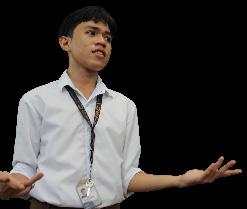
amongst the youth video productions. which inspired us to is also relevant at social anxiety that we leaders, and for the was about mental socially anxious is relevant issues nowadays lead to several depression and addressed,” SSGC Clark Aparece said in awareness is important because ourselves, and needed to really be on his experience. video highlighted mental health awareeducational institutions, light in somone’s them walk through
AI Content Study clinches 1st Place during Research Summit 2024
the darkness and conquer their fear of the world,” as stated in their post.
KAYA NA, ranking 2nd, focused on the effects of verbal negativity in their video, addressing its impact on one’s mental health, saying, “Words are knives that often leave scars, choose them carefully. Breaking the stigma of mental health starts with each one of us.”
The 3rd place, Man-ai Youth Community demonstrated how someone’s greeting can uplift another, emphasizing that a simple ‘Kamusta ka?’ can have a positive impact and can encourage someone to feel safe and not alone.
The Oro Youth Organization is a social innovation for youth empowerment and participation in local governance, aiming to support the youths.
are 7265 enrolled students in College of Engineering and Architecture (CEA), 1175 students in College of Science and Mathematics (CSM), 3284 students in College of Information Technology and Computing (CITC), 2051 students in College Technology (COT), 2232 students in College of Science and Technology Education (CSTE), and 399 students in Senior High (SHS).
- Mother Organization, and one of their projects named “PaminNOW: Deaf Community Awareness, was awarded the title of Best Project.
USTP-SHS branches under CSTE department

 by Mary Allaine Cabot
by Mary Allaine Cabot
In accordance to Memorandum No. 015 S. 2024 from the Office of the Chancellor, The Senior High School Department of The University of Science and Technology of Southern Philippines (USTP-SHS) is placed under the College of Science and Technology Education (CSTE) starting the 2nd semester of school year (S.Y.) 2023-2024.
The memo indicated that in order to streamline the Senior High School Department as a Laboratory Senior High School, it will be placed under the CSTE department starting from the second semester of the academic year 2023-2024.
Harvey Rosal, a Grade 12 student of USTP-SHS expressed his takes and expectations regarding the placement of the Senior High School Department under the CSTE department.
“Everything felt new in the learning environment since I also noticed that things became more stricter, and I somewhat realized that we were somehow “babied” by our previous instructors when it comes to complying on requirements before being included in the CSTE department, and that made me worry about the performance of some students and to those
The research paper, entitled “The Influence of Academic Profile on the AI-Generated Content Discernment Proficiency of Teachers”, secured its 1st Place as Best Research Paper during the Research Summit held last January 26.
The study was conducted by Group 8 of Grade 12 Empowerment from the University of Science and Technology of Southern Philippines — Senior High School (USTP-SHS).
Group 8 has stated that the main purpose of their research revolved around a main idea, specifically, “how in-depth AI has reached in generating content indiscernible from student’s work.”
The paper aims to shed light on the proficiency of teachers in discerning
SSGC unravels Decipher for aspiring leaders

Senior High School Governing Council (SSGC) holds Decipher: Codebreaker for a Blazing Future on February 3 and 17 at University of Science and Technology of Southern Philippines (USTP) Cagayan de Oro Campus to train senior high school students to build community initiatives.
The two-day workshop is also a competition that students will present their project proposals that the chosen pair will implement their projects under the council.
The said workshop is partnered with Oro Youth Development Office and sponsored with SMART Communications. They invited speakers, including Engr. Diogenes Pascua, the head of Center of Entrepreneurship and Technology (CET), Ms. Syrose Amarille, the CSM Representative and SK Chairman of Molugan, and Mr. Vhaugne Centina, Program Coordinator for Programs and Operations of Oro Youth Development Office (OYDO).
“Experiencing Decipher for the first time was quite the challenge. My partner and I were pressured due to the competitive nature of everyone. But in the end, I was happy that our hard work paid off.” One of the participants named Maxwell Loplop from Grade 12 Benevolence shared his sentiments on the said event. They were trained to identify societal issues, manage and ideate projects, and design thinking.
Furthermore, the participants pitched their projects on the last day, and the Project PAGSIGA won first place and the project heads were Julian Rafael Galvaz and Maxwell Loplop from Grade 12 Benevolence.
88 USTP researchers thrive in AD Scientific Index World Scientist Rankings 2024 by Mary Allaine Cabot
Students celebrates as 88 researchers of The University of Science and Technology of Southern Philippines (USTP) ranked in the 2024 AD Scientific Index World Scientist Rankings. From the previous edition’s 70, 18 researchers from the university retained their positions in the ranking system, with 5 of them consistently maintaining their status among the top 1000 scientists in the Philippines.
who are still adapting on the new teaching style from the CSTE instructors,” Rosal said in the interview.
He also conveyed that the learning approach from the instructors of the CSTE department for the current semester will be more promising in training students to be more prepared in college.
Furthermore, Leah Tabosares, the Academic Head of USTP-SHS, explained how the decision of placing the SHS department under the CSTE department took place.
“The high school department has always been a part of the college education way back in 2015-2019. In 2020, the proposal for the reoffering of the SHS places it independently under the vice chancellor for academic affairs. The decision this time was brought by the issue of whether the SHS is a laboratory school or not and as mandated by the USTP charter, the SHS is a laboratory school, thereby the necessity to place it under the college of education”, Tabosares said.
Regarding the decision to continue the operations of the SHS department in the university, the Academic Head briefly stated that the decision is up to the board of regents of the university.
discerning content generated by artificial intelligence.
It focuses on the question, “can teachers distinguish AI-Generated content from student written content”, and if the teachers can or cannot differentiate it, what would be their proficiency in doi “I find it unfair that some students use ChatGPT and still have the same or even higher grades than the students that wrote through their own words”, stated by one of the members as to why they chose this topic.
Allan Jumuad Jr, the group leader, expressed their group’s curiosity if teachers are aware of the students’ outputs being AI-generated as it alarmed them when they know that their classmates use AI-generated content.
“My team and I are composed of individuals that are fond of writing different formats of literature–when it was brought to our attention that some of our classmates were submitting AI generated content, it truly sparked a sense of ‘halah dili fair’ in us. With the advent of AI, it showcased how almost, and sadly, replaceable authentic human writeups are,” Allan Jumuad Jr. said.
The research paper is now under revision through the guidance of advisors before it is officially published.
‘Bloom Nook’ app tops overall award in IITS Gallery Walk
by Jeph Ashbelle Taruc
Team Incognito, from section Empathy, wins the overall award with Bloom Nook, an application, as their prototype during the Introduction to Innovating Technology Solutions (IITS) Gallery Walk held at Dr. Ricardo E. Rotoras (DRER) Gymnasium on January 25.
Bloom Nook is designed for users who struggle from stress because of academic and personal responsibilities. The app has a Task Tracker to help manage the users’ activities, Mental Checker that allows the users to express themselves through mood tracker, journal, and meditation, and a virtual garden where the users can decorate using plants and pets.
“Our target users kay mga students na ga struggle with managing stress because of their academic activities and other tasks (ex. household chores). With the help of Bloom Nook, mas maenjoy and less stressful sa target users namo ang pagbuhat sa ilang every day tasks. Aside pud na maka-help with relaxation among app kay maa puy journaling feature na pwede mahimog outlet sa users para mapagawas ilang gakafeel,” Aliyah Botinggan, a group member of Team Incognito said.
Hard work paid off According to Botinggan, the team did not expect to be the overall winner as other groups also have different yet unique prototypes demonstrated on the same event.
“During sa awarding, nashock jud mi na apil among team sa mga winners and di mi katuo na kaupat mi natawag in front para ireceive ang among certificates. My team and I are very happy na makita na nag pay off ang among hardwork sa gallery walk presentation and overall design thinking journey namo. Makaproud sad na nahatagan ug recognition ang prototype na gibilaran namo’g himo.” Botinggan added.
‘Collaboration and communication is a must’
Botinggan emphasized that the team must know how to collaborate and communicate with their group mates, speaking out their ideas and combining them. Additionally, Botinggan learned how to be patient since other members are unresponsive and uncooperative sometimes, that is why she is trying her best to maintain a good relationship with her team and encourage them to participate more in their group discussions.
Furthermore, Franz Eman Baclayon, also a member of Team Incognito, highlights that every idea has a value.
“No skill is useless. No matter what that skill may be, use it to your advantage. No idea is dumb, the simplest of ideas can make the best solutions. And no solution is impossible–don’t undersell yourself, always try to find the best instead of settling for the worst,” Baclayon said.
Botinggan also expressed how their team encountered obstacles in making their prototype. The group used Figma, a design tool also built for prototyping, to make their output look more pleasing, yet the tool was hard for them to learn as they were unfamiliar with it. The team did a trial and error for their app to work effectively.
Moreover, three teams – Incognito, Numerics, and The Pawns bag the Top 3 Best Presenter Award while Team Aspire 2, Team As4ration, and Team Incognito clinch the People’s Choice Award. Furthermore, Team Incognito, Team The Pawns, and Team Six Pack attain the Best Prototype Award.
The Official Publication of University of Science and Technology of Southern Philippines Senior High School NEWS 3
by Jewel Daguinotas
USTP-CDO SHS students on the campus on January 29, 2024.
PHOTO BY FATIMA TORREMOCHA
Project pitching during the Decipher: Codebreaker for a Blazing Future on February 17 at Cafeteria Hall.
PHOTO BY SSGC USTP
security personnel.
BY Miguel Estenzo
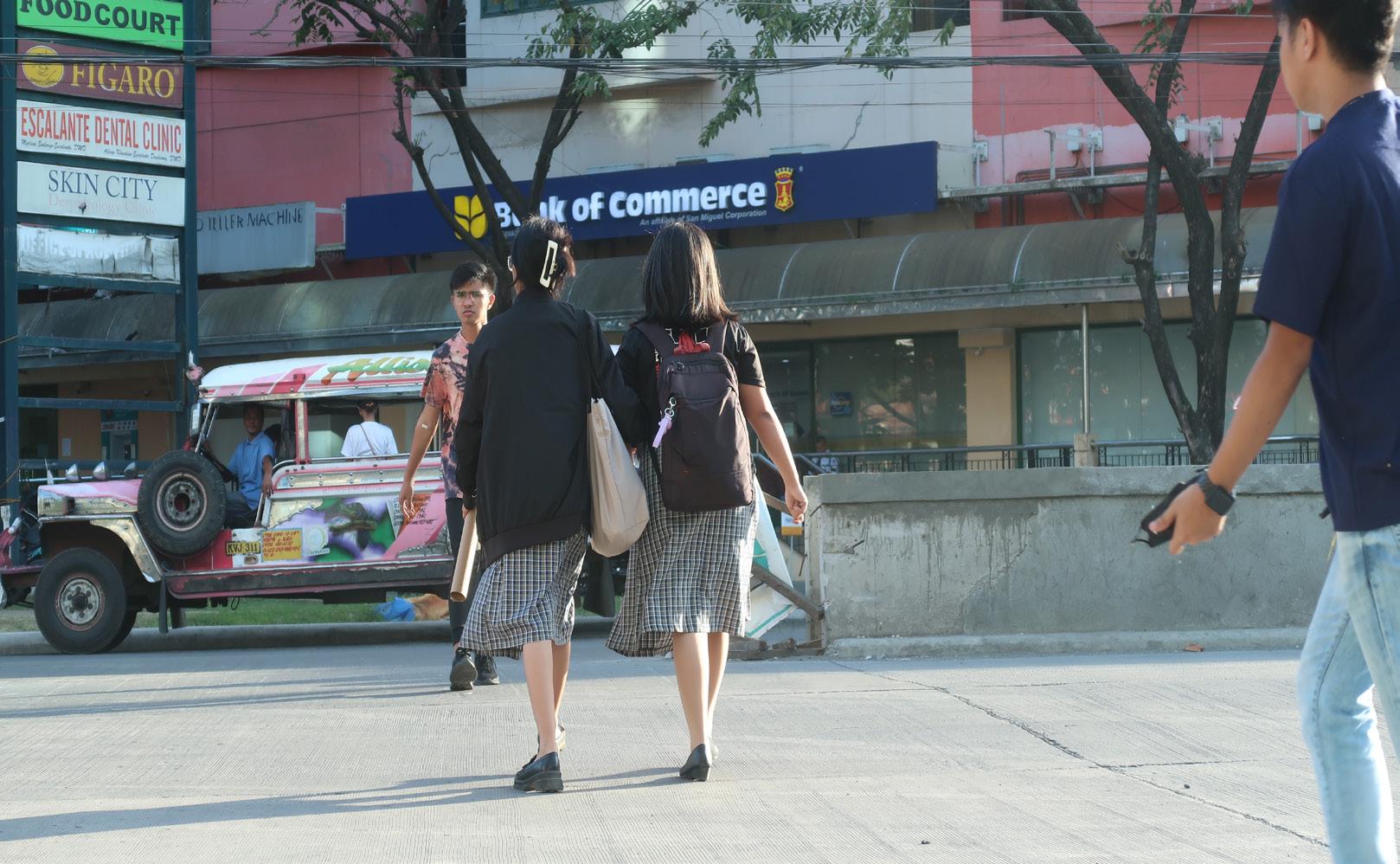
USTP reiterates prohibition of crossing CM Recto highway
by Leonah Leaf Campilan
The Office of the Chancellor of the University of Science and Technology of Southern Philippines (USTP) reiterated the use of the Limketkai Gateway Overpass and prohibiting pedestrians to cross the CM Recto Avenue National Highway fronting USTP, through a Facebook post in the USTP Student Affairs - CDO page.
In Memorandum No. 004 s. 2024 that was posted on January 18, the university has addressed this issue for the second time to ensure the well-being of the USTP community especially the pedestrians and motorists, considering that the highway is busy and prone to vehicular accidents.
The first memorandum posted about this matter was Memorandum No. 127 s. 2023, dated September 12 last year.
Security’s role
“Aware mi ana na memo... Ang amoa lang gyud mabuhat is mag remind lang jud sa studyante, magbitbit mig memo nga ipakita sa ila... Mas daghan man nuon magpatuo, naa lang juy uban nga dili [We are aware of this memo... All we can do is just to remind the students, we bring a copy of the memorandum to show them... Many of them would obey, but there are still others who don’t,]” a security guard from USTP who wished to keep his identity anonymous, stated.
He added that the university already ordered a Roads and Traffic Administration (RTA) officer to manage this issue, but even the officer himself still needed help from the guards to admonish those who still cross the road, despite numerous reminders and warnings.
The security guard then explained they suggested to the Office of Student Affairs (OSA) for other interventions such as confiscating the IDs of students who will disobey the memorandum, but as of now, they are still waiting for further orders other than
reminding both students and faculty to use the overpass.
Students’ perspective
“I observed that guards and faculty showed professionalism in dealing and reminding students of the memorandum’s presence and significance,” said Myrna Llamis, a college freshman, in an interview.
She also said a clearer and appealing reminder of this memorandum would be to put up signage and posters, to be able to instill an effective presence and reminder to the population.
OSA’s reiteration
In an interview with Mr. Julito Ygonia Jr., the Executive Assistant of the Office of the Vice Chancellor for Student Affairs and Services (OVCSAS), he stated the Office of Student Affairs (OSA) set themselves as examples and encourage the students to abide the memorandum.
“Because that is for the benefit of everybody, knowing nga highway na siya so mahitabo gyud ana daghan mga bata maligsan, mabanggaan, so we encourage them to follow
[Because that is for the benefit of everybody, knowing that is a highway so what will happen is that many students will be involved in vehicular accidents, so we encourage them to follow,]” Mr. Ygonia added.
He also said the Vice Chancellor himself, Engr. Erich Abad, also monitors the highway every morning, and that they reiterated the memo not only for the students’ safety, but for the faculty and USTP personnel as well.
“But as to the strict implementation, wala pa gyud [But as to the strict implementation, there’s still none,]” Mr. Ygonia remarked, as there is still no sanction or violation for those who still cross the highway as indicated in the OSA handbook.
Comelec receives Cha-cha inks from 1,000 up cities, towns
by Jeph Taruc
Commission on Elections
(Comelec) has received signatures from a total of 1,072 municipalities and cities nationwide during the ongoing people’s initiative, aiming to revise the 1987 Constitution. According to Comelec Chairperson George Garcia, 187 out of 254 districts across the country have signed the people’s initiative, which have apparently increased since January 21, Saturday with at least 884 cities and municipalities receiving signatures resulting in a 17.5% rise in less than a week.
As per Republic Act No. 6735, also known as “The Initiative and Referendum Act”, at least twelve percent (12%) of the total number of registered voters, which will be represented by at least three percent (3%) of every legislative district, shall sign a petition in amending the 1987 Constitution. The registered voters’ signature will then be validated and verified by the Comelec. National plebiscite will be scheduled for the people to vote on the petitioners’ constitutional amendments.
1% believes Cha-cha is urgent
Meanwhile, a recent survey conducted by OCTA Research on December 10–14, 2023 reveals that only one in every 100 Filipinos view Charter change as a national concern, instead 73% of the citizens prioritize inflation of basic necessities as the most urgent concern.

Students stir over Marcos Jr chopper ride to Coldplay concert
Music-lover President Ferdinand “Bongbong” Marcos Jr. draws criticism online after being spotted using the presidential chopper to attend Coldplay’s “Music of the Spheres” concert in Bulacan on Jan. 19, with some calling it out as “a grave insult to millions of commuters”.
Among the local celebrities and personalities that attended the Friday show were Marcos and First Lady Liza-Araneta Marcos, who were spotted arriving at the venue in a presidential helicopter.
Criticisms were hurled at the president due to this, with some social media users expressing their disappointment.
A student-netizen from USTP-SHS expressed her disappointment from a commuter’s perspective.
by Mary Allaine Cabot
“It is very disheartening to witness a government official using an official asset (vehicle) of the Philippine government, which is practically funded by the hard-earned taxes of the Filipino people, for personal use,” the student-netizen explained.
She also personally conveyed that the event is a vulgar evidence of abusing the power they hold that’s supposed to be exercised for the benefit of the Filipino people.
President Security Group (PSG) chief Major General Nelson Morales released a statement on Jan. 20 regarding the president’s use of the presidential chopper to attend the concert, stating that due to an “unprecedented influx of 40,000 individuals” attending the concert resulting in “unforseen traffic complications”, they
decided to use the presidential chopper.
“
It is very disheartening to witness a government official using an official asset of the Philippine government, which is practically funded by the hard-earned taxes of the Filipino people, for personal use
CDO hospital to improve mental health center
City-run J.R Borja General Hospital (JRBGH) will upgrade its mental health facilities in collaboration with House of Hope Foundation after the Philippine Health Insurance Corporation (PhilHealth) introduces its mental health package advantages, aspiring to transform into a mental health hospital following Mindanao Mental Hospital in Davao City Dr. Ferdinand Miranda, chief of hospital, says in an interview that the mental health center will be named “Cagayan de Oro Center for Mental Health”,
by Jeph Taruc
which will be located in an independent building around the JRBGH Compound comprising 11 personnel, primarily from the medical profession, that would be established on the first quarter of the year.
Currently, the temporary mental health facility at House of Hope in Lumbia is facilitating 67 patients, including residents across Misamis Oriental and Camiguin.
Additionally, PhilHealth-Region 10 Information Officer Merlynn Ybañez stated that the agency will accredit
mental health facilities that will provide mental health packages.
As per Republic Act No. 11036 also known as the Mental Health Act, PhilHealth should provide adequate mental health services, regardless of socioeconomic status PhilHealth President and Chief Executive Officer Emmanuel Ledesma Jr. states in a statement they will improve the mental health package that would benefit the members, as well as their dependents.

OCTA poll indicates that 45% of the citizens prioritize access to affordable rice, vegetables and meat, 36% for more job opportunities, salary improvement (34%), and curtailing poverty with 32% of the citizens. Additionally, free and quality education (15%), fighting graft and corruption (13%), upholding peace and order (10%), law enforcement equality (7%) and tax reduction (6%) were also rated.
On the contrary, two percent of the respondents from Metro Manila view the 1987 Constitution amendment as one of their most urgent national concerns, together with one percent from Visayas and Mindanao.
Given the number, Bagong Alyansang Makabayan advises the Congress to sort out the citizens’ top concerns first, yet Albay Representative Joey Salceda refutes that revising the 1987 Constitution would improve the people’s livelihoods if carried out.
“The House-preferred provision on allowing the law to govern constitutional restrictions on foreign land ownership would unlock as much as 7.11 percent in nominal GDP growth – almost doubling agriculture’s contribution to the economy,” Salceda said.
Salceda also emphasizes that the administration must focus on providing the needs of the Filipino family.
USG pledges for betterment in SOSGA 2024
by Noelle Lago
The University Student Government (USG) of the University of Science and Technology of Southern Philippines- Cagayan de Oro (USTPCDO) held the first State of the Student Government Address (SOSGA) via Facebook Live on February 16, 2024.
Despite the almost six (6) months of silence, the USG aims to assess its achievements in the first semester and outline plans for the upcoming second semester.
USG President Kathleen May A. Paid presented initiatives aimed at enhancing student leadership at USTP-CDO, such as collaborating with the Global
Youth Foundation and SM Cares for the ‘Global Youth Summit’, meeting with Dr. Ambrosio B. Cultura II, the University President, and participating in the ‘Learn, Lead, Serve Camp 2023’ to instill leadership and service values among students.
In addition to events like the Week of Welcome, United Nations Celebration, and USG General Assembly, various activities have been introduced to provide to the students’ needs and preferences, with the aim of enhancing their academic journey and individual growth.
“Right now, as it sets open for the second semester, we are hoping to implement
programs that could help your welfare, and of course, your betterment”, as said by Ms. Paid Furthermore, USG Vice President Sandy Mae E. Carillo highlighted approved resolutions, including the appointment of a USG moderator and changes to office account signatories, underscoring the office’s commitment to serving the student community.
The address concluded with Paid expressing gratitude to SOSGA collaborators, including the Strategic Communication Office, as well as acknowledging the efforts of USG staff and members.
4 NEWS
USTP students crosses C.M. Recto Highway on February 10, 2024. In light of the Reiteration of memorandum no. 004 s. 2024, crossing the highway is strictly prohibited and monitored by the
PHOTO
PHOTO BY University Student Government
CHAPTER CLOSED...
To resolve the problem, the DepEd have issued Order (DO) No. 11, s. 2015 known as the SHS-VP program to help the parents of the underprivileged students to study in a private school after the cut off in the number of SHS students to be enrolled in public schools. In this setting, the opportunity to finish secondary education is given to the student. With this resolution, SUCs and LUCs offered SHS programs as part of an agreement with the DepEd for the transition period for K-12 from 2016 to 2021, when most colleges and universities would have little to no freshmen.
The highlight of the agreement between DepEd and Ched was to fill in the gap of insufficient classrooms. Nonetheless, such a concern is still an issue at present. According to the 2024 budget, DepEd is proposing ₱10 billion that can only build around 7,100 classrooms, which is far from the accumulated shortage at 159,000. Evidently, public highschools still struggle to accommodate a large number of students and this concludes the ongoing concern to sustain the “non-permanent solution” up until it will be fully resolved. Conse-


quently, Deped and Ched must extend their agreement of offering shs programs in SUCs as the educational problem is not halted.
Commission on Higher Education (CHED) regulates and/or supervises Higher Education institutions, and State Universities and Colleges. Hence, it is mostly related to higher education or tertiary education, that is, from college to graduate school. Therefore CHED must prioritise the accommodation of graduate and undergraduate students in utilising the facility in universities.
Thus, if the senior highschool program in SUCs affects the sufficiency of the facility, CHED must exclude the offering of senior highschool program to ensure the utilisation of college students in a university. Before the K-12, CHED had what are called laboratory schools and if their charter states that they can have a teacher education program as a degree course, they can have a laboratory high school. Such a policy continues and the only process that is halted is simply the voucher system; hence, once a student is in grade 11 or 12, students must be in private schools, DepEd schools or SUCs
“ Nevertheless, laboratory schools in SUCs and LUCs give an opportunity to the
or LUCs that are under the CHED charter and allowed by the Board of Regents to accept a certain number of allowable students under their lab schools, but no longer having the voucher system for both the SUC and LUC.
Nevertheless, these SUCs and LUCs who offer senior highschool programs have put the students into a broader approach in science and mathematics. For instance, laboratory schools like USTP-CDO senior highschool have adjusted their shs curriculum in accordance to the DepEd but have made it more competitive in the field of science and technology.
Furthermore, the access to the science and technology inclined lessons are not only obtained by the student in classrooms but also through the university’s initiative events and university based organisation. One of the examples of this initiative is the Google Developer Student Club (GDSC) in the campus where all students are allowed to join—including the senior highschool.
The club aims to build a community for student-developers. In the same way, the organisation holds event competi-
tions like “INNOVATE” that showcases the talent of participants in igniting innovation through technology. Therefore, the continuance of senior highschool in SUCs and LUCs will expose students into competitive fields like this. Ashley, a senior highschool student of USTP-SHS said that “The opportunity to get into this university is once in a blue moon. I admire how it feeds us students in organisations that allow us to get involved in actions that matter. These events have encouraged us to invest in the science and technology field when we move to higher education”
In the same way, CHED allowed these SUCs to establish laboratory schools can sustain their accommodation of the senior highschool program. However, one thing is only needed for the students to achieve free education in these institutions, that is the reinstatement of the DepEd voucher program. Therefore, as the issue of insufficient facilities is still a concern, the DepEd must extend the SHS-VP program in SUCs to temporarily aid the gap.
EDITORIAL 5 The Official Student Publication of University of Science and Technology of Southern Philippines Senior High School
EDITORIAL BOARD (AY 2023-2024) EDITOR-IN-CHIEF Jewel Rose Daguinotas ASSOCIATE EDITOR Allan Jumuad, Jr. Managing Editor Jertrude Thea Mae Diolanto News Editor Mary Allaine Cabot Editorial Editor Ian Rushell Paul Tan Feature Editor Allan Jumuad, Jr. SciTech Editor Vic Celestine Orain Sports Editor Carlyn Faith Catane Editorial Cartoonists Ralp Justine Butco Gianne Loquias Staff Writers Leonah Leaf Campilan Noelle Angelie Lago Jeph Ashbelle Taruc Caitlynn Juliana Raro Lyza Mae Bernal Farrah Luzon Ace Dwayne Dicdican Xet Jose Bacol Christopher Alga Photojournalists Fatima Joy Torremocha Miguel Estenzo Sofia Alexandra Moreno Pauline Sanoria Page Designers Jewel Rose Daguinotas Allan Jumuad, Jr. Matt Jason Abellanosa Digital Artists Julian Rafael Galvez Ken Adrean Tupino Schoolpaper Adviser Ms. Jessa Mae Sardan Consultant Ms. Leah Mae Tabosares Principal Dr. Grace S. Pimentel DISCLAIMER The opinions and viewpoints declared by the Spearhead Publication does not entirely represent the Senior High School Department of the University of Science and Technology of Southern Philippines. The writers’ viewpoints are voiced in all of their writing, which is not meant to disparage anyone.
by Ian Rushell Paul Tan
Cartoon by Ralp Butcon
Prior to 2016 when the Department of Education officially launched the K-12 program to aid the gaps of education in the Philippines to transform into a global approach. However, the conflict arose after public highschools have struggled to accommodate all senior highschool students who came from public schools.
access science
technology
ing curriculum. Therefore must continue to op-
to produce more innovative students.
students to
and
inclined learn-
erate

reputationoverpriorization
Too Many To Handle
by Jewel Daguinotas
The university promotes quality education despite having only approximately more than 30 classrooms, which is not enough over 17,000 students in the university, including senior high schools.
The University of Science and Technology of Southern Philippines - CDO is still in hybrid mode after the pandemic, in which students will come to school 2-3 times a week for face-to-face classes. It is a struggle to come to school having low availability of learning facilities, especially since your department has an insufficient number of classrooms.
Instructors will undergo reservation for facilities in order to use for their classes, and sometimes students ended being confused and left unnoticed where they suddenly see students from other blocks using their designated facilities, “Nganong nagklase man sila dinha?”, then ended conducting classes outside the classrooms.
The university advocates Sustainable Development Goals or SDG and prioritizes on providing quality education. However, having insufficient facilities already made the university fail to obtain one of the goals from SDGs. The quality education includes the learning environment the institutions provide to students, yet USTP CDO is too ambitious enough to fit thousands of students in an insufficient number of classrooms. Does the USTP CDO envision this as a problem? According to a “The Influence of Level of Availability of Learning Facilities and Learning Engagements of College Students” conducted by Kathlyn May Uba and her team in the university, the level of availability of learning facilities is highly correlated to the students’ learning engagement, which means that low availability turns into low learning engagement. The students will have low level participation in class, especially in their overall cognitive engagement.
There are already complaints from the ‘USTP Freedom Wall’, a Facebook group page, about the lack of classrooms on how the university accepts a high number of students yet cannot accommodate all of these accepted students. What is exactly the goal of the university for these students?
The board is too invested in the other campuses while the core issue of Cagayan de Oro city (CDO) campus is left unseen. The CDO should build more and high-quality infrastructure similar to the Alubijid campus, especially this campus offers more programs than the other campuses. E-learning is a weak spot option for the university to offer, especially the programs offered by the university needs to hands-on learning that must have suitable area such as laboratories.
Students study this university to have quality education, then the university should give what they deserve to have. The school is for the students, not for its name serve.
Not So Clean As You Go
The university, including student organizations, advocates dark green revolution yet the students fail to follow the proper garbage disposal.
Recently, the Senior High School Governing Council (SSGC) held a 3-day event called SenHigh Fest and was reported to have a massive amount of trash being irresponsibly piled up during the said event, which led to raise the Clean As You Go (CLAY to the students. However, the awareness leads to nowhere.
There are alot of acts and programs in the country, including the Republic Act 9003 or Ecological Solid Waste Management Act of 2000, that raises awareness about proper garbage disposal.
According to Article 2 Section 2 in the University of Science and Technol ogy of Southern Philip pines (USTP) Student Handbook, one of the non-academic offenses is littering, for example, the careless throwing of trash inside the campus. It might be written in the student handbook but it still becomes helpless to main
tain the cleanliness in the university. The amount of words tried to portray but the lack of action was not enough to make the students follow.
by Jewel Daguinotas
But it is hard for students to be responsible for their own trash. Even though there are three (3) trash cans displayed in each corner in the buildings, the students still throw them in the wrong spot as they are dependent also attached notices on every side in the cafeteria that made them suddenly blind.


One of the students from the university shared, “Mga gahi man gyud kaayo ug ulo ang uban students, kahibalo na naay duol na basurahan sa ilang table, ibilin ra pa gyud sa ilang lamesa tas biskan daghan pa kaayo signage na ‘CLAYGO’ sa cafeteria, dili are ‘CLAYGO’ signage in every shed in the university as a form of reminders to students.
(The other students are too stubborn, even though there is a garbage can near their tables, they still leave their trash on their table, and despite having many ‘CLAYGO’ signage in the cafeteria, they still do not follow it.) There is now an increased number of mosquitoes or even insects wandering the campus that might lead to health implications to students, which is caused by the garbage from students. The lack of orientation on the student handbook is also an implication of this situation. As the university already established the new version of the student handbook, the student councils should orient the student body about the student handbook and become more strict on the garbage disposal issues. Even though the students are too stubborn, they ironically mourn if the world is about to collapse.


What can you say about the student government in the university?
“I think the government (SSGC) should have more student-centered programs that enrich students’ academic competencies— spelling bees or speech contests aren’t exactly that; we need something that has breadth, something that actually matters, especially to academically inclined individuals.”
Uniformity over Comfortability
What’s in a haircut?
School policies in academic institutions are implemented to serve sensible purposes, aiming at the orderliness of the learning environment. One of the prevailing policies is the haircut policy which is implemented for instilling self-discipline in students and teaching them how to ideally present themselves professionally and decently in their school uniforms. However, in the department, these reasons overshadow the call of students to oppose from a substantial standpoint against the haircut policy.
26 out of 27 student pollies disagree to the strict implementation

of the haircut policy in the department, and this opposition does not pivot on students getting proper grooming for themselves, as it is an essential part of habitual hygiene, but it rather centers on the institutions’ imposition of set haircut standards on students. Limiting the length of a student’s haircut limits their ability to present themselves with confidence and comfortability. Students should have the full freedom to channel their chosen haircut as their form of expressing oneself while being presentable, gaining the sense of comfortability with their appearance and boosting their self-esteem. Furthermore, no study has ever
proved that a student’s haircut holds an impact to the way they perform in class, and even the Department of Education’s Development of Learners’ Discipline Manual, indicates the ideal haircut measurement of male students as a ‘suggested’ hair length standard, which means it does not impose a specific haircut on male students. Therefore, it is imperative that the department acknowledge that an individual’s haircut is arguably insignificant to a student’s academic performance, and it is not a concern that the stakeholders should be strictly focusing on to implement. They should reconsider this policy and choose to explore other methods
Top Shelf or Toppling Shelf
Can the “cream of the crop” keep their title when the system’s yearly assessment result tells otherwise?
With the department’s recent disclosure of the Learning Continuity Review Program (LCRP) results of Academic Year 2022-2023, only 18 out of 205 takers from the Senior High School obtained the 70% passing score.
Multiple reasons may answer why an undesirable result was achieved, but a common denominator from the perspective of interviewed students is how the exam was confidently complied for the ‘academic year’s clearance’ knowing that there’s zero consequences attached to it. “I think the reason why we got such low scores on the test was not because of our academic inability, but it was due to how much we valued the test.” Exactly. Why exert effort if it holds no bearing to their academic standing and status, right?
Generally speaking, perhaps the
assessment did not just try to measure the academic intelligence of the SHS students but as well as their attitude towards
I think the reason why we got such low scores on the test was not because of our academic inability, but it was due to how much we valued the test.
by Jertude Diolanto
of advising students to get proper and regular grooming as a building block of showing professionalism at the same time building their confidence. An academic institution acts as the second home of learners where they are nurtured intellectually and honed as their own individual, therefore, it is pivotal that inside the premises of an institution where young minds are being nurtured, the comfortability and confidence of learners being themselves should be prioritized over appearance uniformity.
by
gravity to the scholastic matters they were instructed to diligently complete and not just comply. The title is much more than the perceived outstanding skills and intelligence each Spartan possess, what weighs heavier than this is the expected right attitude and virtues that supplement these qualities.
The results surely do not fully reflect the overall intelligence of students and the depth and variety of knowledge they gained for the courses they took, but it implies the effective interplay between the efforts of students and educators, reflecting the approach of students in their academics, and the competence of educators to instill and relay course contents effectively. Thus, in the hopes of the department seeing better outcomes in the next LCRP exams, the department should perform evident interventions to identify the gaps and perform efficient methods to bridge these gaps.
6 OpiNiON
impracticalpractice
Very scholar dominated ang USG,
“-
-
-
makes me think if naa ba silay collective agenda nga gina push?”
mala kaayo ang USG
maihap ra sa kamot ang events
dili pa gyud nimo feel nga naay USG - dili inclusive”
downgrade
informalformality
scholastic matters that demanded their attention. Perhaps it wasn’t the test that the cream of the crop failed but in putting
Jertrude Diolanto
Art by Gianne Loquias
Art by Ralp Butcon
“

Not for Free
MONEY OVER MATTER
by Jertrude Diolanto
Students are enrolled in public schools for the purpose of being free of tuition fees and for a lighter financial burden attached to achieving educational attainment. So, why would a certain amount of Philippine peso restrict the students from having the well-deserved academic value of their hard-earned work? It is the basic right of a student to have access to their academic evaluation and standing records, so why would an academic institution make it a cruel way to hold students accountable to pay fees?
“So, the value of our months’ worth of hard work can only be claimed through ‘amot’?” A student’s thought that stemmed from a first-hand experience of this issue, which shows that the point here does not dwell on the reason behind the monetary collection but on the way how students are ‘encouraged’ to assist curricular activities financially.
The Department of Education manifests its empathy towards the Filipino parents and learners through the DepEd Order No. 41, s. 2012, which clearly aims to minimize or eliminate financial constraints as a barrier for students to access quality education by emphasizing that contributions in school are voluntary, and specifying what kinds of contributions under what circumstances are allowed. Thus, to witness situations inside public schools where grades are made ultimatums to urge students to participate in collection of fees for specific matters is as concerning as it sounds.
In a setting of a public academ-
ic institution, it should be a known knowledge to everyone, especially to the stakeholders that students are under different economic standing and financial situations, thus, not everyone has the equal financial capacity to participate on monetary contributions or comply immediately as per the request or demand of the school. Thus making this issue a condition that involves academic matters, specifically in terms of holding a possession of their grades is inconsiderate and unreasonable, problematically showing no empathy towards learners and their parents. Failure to participate or comply with monetary contributions shouldn’t be a kind of pressure that is hardly put on students. The capability of students should never be equated to the ability of learners, never be an impediment to their access to academic experiences, and never be a reason for them to be restricted from their basic rights as a learner.
studentnotcentered Project Student Connect
by Jertrude Diolanto
Academic Year 2023-2024 is already in its second half; however, it seems that the university and the department’s student government are just getting started. Both administrations are just starting to materialize projects and programs, filling a post that has been quite quiet since the academic year’s commencement. For half the school year that has passed, it seems that they lacked a centralized avenue to actually connect and collaborate with students in order to execute objectives that concern both the student body and student governments.
The department of education has set a curriculum that provides for the establishment and maintenance of a complete, adequate, and integrated system of basic education relevant to the goals of national development. The Department of Education also ensures the set of topics to achieve certain learning outcomes. However, in the University of Science and Technology of southern Philippines(USTP)-CDO senior highschool, a number of lessons per subject are left unattended and have diminished in classes.
Faculties of the USTP senior highschools are from the different colleges inside the university and mostly are from the college of science and mathematics. Nonetheless, the concept of seeking instructors to teach the senior highschools—includes sending a request letter to the dean and finding a part-time individual. In this setting, the part-time instructors don’t have an employer to employee relationship with the depart-
ment. Consequently, this allows them to come and go. This damper has resulted in the compromission of learning outcomes to the students.
The factor that opens the issue revolves around the instructor’s commitment to teach. A fraction of this; is the need to find a regular job to fully invest their time in. Prior to the academic year 2022-2023, grade-12 students of USTP senior highschool have conflict in retaining their lesson. Ms. Leah Tabosares, the academic head of USTP senior highschool said that “last academic year, the students did struggle with their subjects. There was a time when one of their instructors left them. It’s because the department has hired a part time instructor, however, they got hired to a different university. What we did is we hired a new instructor, and luckily tarong na sila, so they discussed everything again”. On the other hand, students like Ms. Juliana Abao struggles to manage her time and gain pressure as the fear of her academic excellence will
by Ian Tan
fracture, “Kay there will always be a time bitaw, like last sem, our subjects are major subjects and it’s hard for me to keep up with the lesson especially there are subjects na ang instructor kay dili gasulod, and as a student who ace more in auditory learning, i struggle to analyse a topic. Also, the modules are passed after several days and it destroys my schedule esp pag-hapit nang exam. This affects not only my academic struggle but also my health as i have to put extra time to aquire the subject”.
Unfortunately, the senior highschool department struggles to track the poor performances of these part-time instructors because they only report their attendance to their college department. However, students can report this issue to the department to inform them about the incompetency. The faculty evaluation is also a tool here to cull the instructors. However, these aids do not bring back the time and missed lessons to the students. Consequently, this has only resulted in confusion.
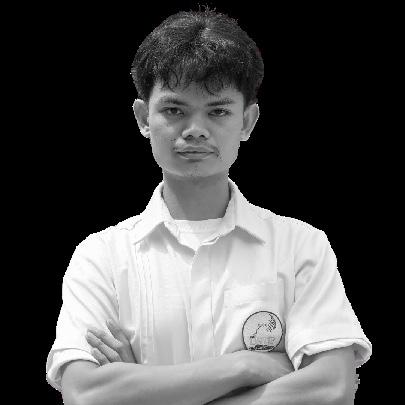
Luckily, the students of USTP senior highschool are smart enough to teach themselves and strive individually to pass a subject. It’s ironic that the educators are supposed to be the ones who nurture the students yet the students become the educators themselves. They could’ve enrolled themselves in home school. The major concern with these incompetencies are the compromission in the knowledge and readiness of a student to a spiralling education. Nonetheless, this setting has taken away their opportunity to have prior knowledge on a higher subject and lead to the conflict in retaining information.
In establishing a school, the heads must ensure that they are ready to serve a quality education and have a collective set of committed instructors to ensure the deliberation of lessons are excellently served to produce knowledgeable students. A stronger contract of service to the employee with added restrictions to prevent them from ghosting the student and impose slackery.
Student governments are surely aware that the roles they hold are responsibilities, and their platform is a privilege that calls for them to execute a series of actions that take the welfare of students into account and consideration and be an actual figure to represent the student body. However, the voice that represented the student body in SpearTalks is proof that students took notice of the absence and have been keeping tabs on the shortcomings of the administration. It seems that both student governments have overlooked the gravity of attentiveness to student affairs and being the representation of the student body in advancing solutions to issues and concerns to the higher level of the university’s system, leading to immediate responses or the crafting of initiatives for the long run. They haven’t materialized the primary need of the student body, which is an active platform that empathizes with the current and future situations of students and a reachable platform ready to listen, anticipate, act, and show results.
Their statement is a call that, from the onset, the university and department’s student governments should have made the effort to make the student body feel their presence by building an in-depth connection between the administration and the student body through initiatives that foster a healthy interplay between the activities of the two parties. This should nudge the student governments to focus on giving some spotlight to the departments of the administration handling student affairs, making them occupy and operate a platform where the administration can extend their reach to students for them to confidently approach with the assurance of being heard out.
Cancel ang ulan kay tungod kusog ang klase.
How much longer will the stakeholders and students of a science and technology university remain to suffer from canceled classes, postponed meetings and events, rescheduled plans, and appointments, and go home with feet soaked in accumulated rainwater in the grounds and hallways of USTP-CDO?
It seems that the long-going primary source of worry in being at the university, which is simply triggered by a heavy rain, has been building resilience on the students and stakeholders, but only bare minimum environment resiliency building solutions has been made over the years.
“As a student in the university and now as one of the system’s employees,
these (flooding) incidents had different consequences. When I was a student, it had repercussions on my quality of learning, but now, it causes delays that ripples through my work process, especially that I am assigned to an office wherein time and efficiency is really vital.” When the situation is viewed plainly, it only causes minor inconveniences, but as this continues, unknowingly, it affects the bigger picture of the university’s efficiency.
As soon as now, the institution should acknowledge that the repetitive situation every time heavy rain pours down is a disruption to the learning setup and performance of students, and to the productivity of their stakeholders.
It is imperative that the system should note that it’s not just the academy that
by Jertrude Diolanto
sets their calendars, but also the students and student organizations under the university. University students may be known for their resilience and persistence, but it is not a reason enough that they should just go with the flow every time this issue becomes an impediment to their set goals as learners who exercise competence.
Although there are actions made like the flood control system, the university still needs to take a bigger leap of action on this matter as it would not only be beneficial for students, but also to the stakeholders that make the USTPCDO system work.
The school suffering from adverse effects of a downpour affects the productivity of educators and stakeholders on performing their duties and objectives

as an effective individual. The academic institution should place utmost significance to the fact that building a student-friendly learning environment does not only encapsulate skillful educators and stakeholders, but also ensures that flexible structures and surroundings are maintained that thrive amidst any weather and circumstance.
The university is undeniably excellent in instilling resilience and empathy on their learners, thus, they should exhibit these qualities by taking the bold action to put an end to the long years of the university agonizing from the fear of flood waters coming our way the moment the rain starts to pour.
May this be an open letter to the university and the department’s student government on the significant aspects of leadership that they should invest effort and attention in? An open letter that redirects the focus of the administration towards a supposedly constant objective that will act as a driving force to build initiatives and strengthen the platform of the student government while ensuring the empowerment and welfare of the student body.
by Jewel Daguinotas
If you have seen couples showing affection, such as hugs and kisses, to each other or even friends, stop being so dramatic because it is none of your business. It is now 2024, and why do you care?
There is no law or memorandum for the Department of Education (DepEd) or the Commission on Higher Education (CHED) that prohibits the public display of affection (PDA). The morals cannot be used against them, as affection is a form of expression towards someone. If you are too bothered enough to see someone doing PDA, maybe you have no one to cuddle with.
Showing affection for someone is normal, but there are certain limits that you need to control. In the end, their affection is none of your business.
The Official Publication of University of Science and Technology of Southern Philippines Senior High School OpiNiON 7
Amnesia Girl ghostteachers
campusresort None of your Business toopakialamera
BYOB at 7 Seas Resort
Art by Ralp Butcon
His breath hitched.


lakdan’s Last Ride
by Allan Jumuad, Jr.
The wrinkling of his eye deepened. His once-aplomb shoulders sagged with distraught as he gazed at their jeepney, “Alakdan.” And when the fireworks erupted, heralding the midnight of another year, it danced with a cacoph onous discord in him—a fire cradled with hate and a breath of helpless despair as the lights reflected on Alakdan’s iron-plated body.
Ricardo could recall that Greg wasn’t like this before.
“Bisan unsa naman akong gisudlan para makakaon akong pamilya! Nag construction work er ko, pero gamay ra kaayo ang income. Busa nga nag konduktor nalang ko.” (I’ve worked in various places to feed my family. I was in construction, but my earnings weren’t enough. That’s why I instead worked as a fair collector.)
And when he decided to raise his head above the deep waters of the city-scape, Greg was there to help him keep afloat. Greg back then often told him of yesteryears, of conquering the roads with his father by his side, and the birth of the coopera tive that became his lifeline
“Naa man gayud tay ginapaningkamutan…” Ricardo mused candidly, recalling when the driver mentioned his children, many more of the aspects they share.
As the years cascaded like dripping sand, Ricardo came to know an alien smile painted on the driver—it was not with joy but obscured with fear, pretentious nonchalance, and a hope that is yet to falter.
It began when the news broke of Alakdan’s phaseout, a nationwide Jeepney rebrand, and with the deadline set, Greg began to dread 2024.
The Jeepney, an emblem of Philippine roads for nearly eight decades, is both iconic and problematic. Accounting for a significant portion of Metro Manila’s pollution, it also lacks safety measures. In 2017, the government initiated the

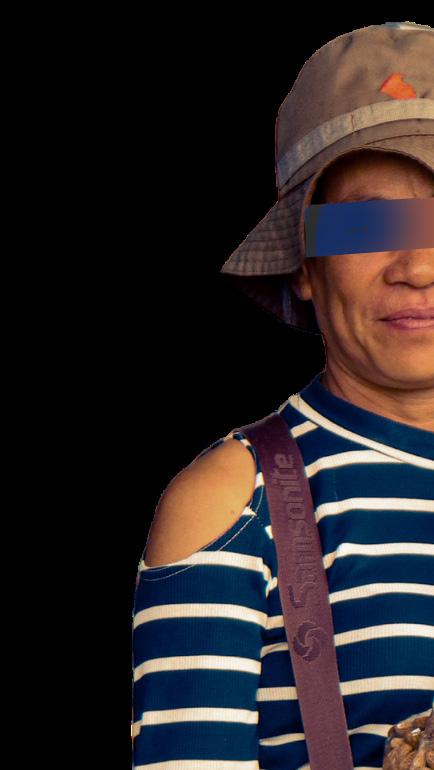


In Agora, one encounters a lot of people as they walk down the streets to the terminal. You might find childhood friends, familiar faces, and even your forever, but it ends with you riding different buses that will take you to differ ent places to depart and come apart. That was how Ray described Agora.
George—in Ray’s eyes, he was more than a face in the crowd.
On that warm June day, he was the wind, a gentle midnoon breeze that swayed Ray’s heart.
Sometime later, their youth reached its peak. Their days of love were ardor-filled, and lulled with whispers of sweet nothing to each other.
In the relentless pace of the world, they found each other’s company, a connection that sprung like June after the winds of summer.
As they walked on the highways of life, they had each other’s palms to assure they weren’t alone, and then, they reached Agora bus station, where an unspoken reality awaited.
When the blur of love lifted from Ray’s fingertips and then George farewelled and started to meld with the throng of commuters, he did look back, he did smile ever so sweetly, and yet there’s a bittersweet chasm that crevices Ray’s heart, for it is always on that unmarked fork where their paths diverge. It is where their sun sets, yet an afterglow prolongs. Each night, they’re destined to board a different bus.
“There were opportunities nga gina compare nako among relationships sa uban; what if pariha mi ug bus nga gina sakyan? Would it make a difference?” (There were opportunities when I compared our relationship to others; what if we rode the same bus each time? Would it make a difference?)
And though their buses intersect at one point, and Ray could see George leaning on the window pane, the space that separates them paints like a parallel line; it exemplifies their separation.
Despite occasional intersections, they never traveled the same route for long. Even when George invited Ray for a spontaneous meal, Ray’s fear of missing their last trip kept them apart, leaving behind a lingering sense
of regret.
On a fateful day in September, the path of their lives, this time, met a fork—a famil iar warmth absconded Ray, and now what lingers are the what-ifs, the clarity of truth, the memory of that night, and a tinge of hope that is continually crushed.
“There were times I thought magba lik mih, and I think all over again, ‘what if nagkaon mih that night?’ But as there were moments that we tried again and again, I am left alone to ride a different bus each time.” (There were times I thought we would become what we once were, and I think all over again, ‘What if we ate in the fast food that night?’)
Agora moves beyond the breeze of a second, and as while everything fades, Ray’s silhouette is crucified, and the memory echoes on that invisible crossroad where they parted, to where he was abandoned and delayed.
But like how ephemeral one stays in Agora only to seek transportation to depart from it, Ray may still be swept with that motion blur, but the wheels of his life were never deterred, although they slowed; they remained steady. His feelings, although once radiant, still persist like a withering afterglow.
“The wheels of the bus we rode on shouldn’t stop, and after all, we should always move forward…be cause soon we’ll arrive at a place we can call home,” he mused, with an unwavering voice. He embraced the lessons learned and the roads yet to travel.
“To the person who first taught me how to love, we may take a different bus and a different road, but one day, unexpectedly, we’ll meet again at a bus terminal and say, “Wow, look how far we’ve come”.”


Nestled by the chaos of the City of Golden Friendship’s the stream of crowds and the cacophony that only
Agora is a barangay in Cagayan de Oro City, known for that take journeys up to the edges of Mindanao. It is the third that enter the heart of the city.
Agora devoids the grandeur of Cagayan; it is the backdrop cradles the smog, where brevity lasts and echoes of hope sink
With Greek etymology, the word ‘Agora’ means “assembly scope of colors, and tales that prosper in this labyrinthine strip
As the roads bend and clash at this singular point, it writes Amidst these tales, Agora stands as both witness and neys end, but stories begin.
Life for Charlita (an alias) is like the oranges she peddles on the passengers in Agora terminal—sometimes sweet, casually sour, occasionally bland, yet all flavors concealed beneath the flawless veneer of a tangerine peel, much like her own carefully crafted smile.
“Dugay nako nagtinda dari, bata palang.” (I’ve been selling here (in Agora) since I was a child.)
For what feels like an eternity, the dusty streets of Agora have been witness to Charlita’s tireless presence. Ever since she was young, she’s been weaving through the bustling crowds; it is as if the holder of the peanut and the wrapped oranges she sells molded with the shape of her palms.
In her 20 years in the venture to this rough, urban jungle, her feet, weathered by years of traversing these streets, carry her effortlessly to the spots where commuters gather. She looks up at the bus windows and vigilantly looks out for gestures of interest.
“Orange, mani, tubig, palit mo sir?
“Orange, peanuts, and water—will you buy, sir?) she calls out, her voice blurring with the wind cutting with a melodic cadence, and an ardor-filled beam on her lips forged by years of adversity.
And then, in a sweatdrop of a moment, a hand on her shoulders sent her sprawling onto the pavement, her oranges splattered like shards of glass. Was it intentional? Perhaps not. Perhaps the accusing gazes stabbing on the fabric of her resilience is an illusion, and so as she gets up, she dusts the oranges that scattered on Agora’s embrace and smiles.
“Dili jud malikayan, usahay wala na gali kay halin makatabo pagyud ka ug mga tawo nga walay respeto.” (It’s unavoidable; sometimes, even on unfortunate days, you will encounter disrespectful people.) Charlita muses, her voice tinged with resignation.
Charlita belongs to the many vendors nailed with prejudices and discrimination based on their names.
8 FEATURE
Ricardo had no idea about the origin of that deep, primeval dread that lingered in Greg, the jeepney driver’s eyes as it shivered when the countdown for 2024 dropped like grains of sand.
Where stories by Allan Jumuad,



radiant heritage, Agora bustles with only the night could bring to sleep.
for its marketplace and extensive transportation terminals third home of travelers and the first scene marveled at those backdrop beneath; the reality in the undergrowth. Agora sink in the bog of its drainage waters.
“assembly place”, and with the myriad of lives, the kaleido strip of land, it lives up to its name. writes a brand new chapter of a tall tale. stage for the unfolding chapters of the tales, where jour
Refinery 29 tells one of the stories, much like Charlita, of the harassment these valiant individuals face on a daily basis. The cascading drama was a harsh reminder of the prejudices she faces as a street vendor.
Beyond the hours where she interacts with the masses, on the threshold of her home, her two children await her. Her responsibilities extend beyond the con fines of the marketplace. Although Charlita once had a life in the comfort of her home with her husband—it was buried with him and residues of obligation bequeathed to her—all was short-lived, and so the bog welcomed her once more.
She saw the passion in her two daughters’ eyes she barely knew—a lightness, an effervescent glimmer—a thirst to grasp the stars. When Charlita was young, all she ever knew was to scour for ways to earn money, and so her efforts were so her children wouldn’t have the same aimless glint.
She knew peddling would be hard. But, “Kani ramay madali-dali sa mga kaparehas nako, solo parent, kailangan man nako muoli, balik napud kay maninda.” (These are the kinds of jobs single parents like me could easily do all while managing the household.) Furthermore, she expounded candidly. “Lisod gayud, grabi gayud ka lisod labi na sa amo usa hay. Labi na pag-isa ka lang, imo pagyud ang tanan-pag kaon, dina pagyud kwaon, lisod gyud kaayu.” (It’s truly hard for me sometimes, especially for single parents like me, whose income is all we rely on.)
As the cloud of hate and hardship conspires for Charlita, it makes smiling an arduous task, but as it be comes a deceptive mask that would shadow her from the cruel world, she simply caress the peel of the oranges she peddles and smiles.


Penny for a Dream
 by Allan Jumuad, Jr.
by Allan Jumuad, Jr.

When the night breeze whispers through the sleeping streets, what’s left are the marked footprints of Agora’s daytime ghosts etched on the worn pavements.
As the sun peeks on the rusty roofs of the urban jungle–Agora awakens.
With the morning air comes scurrying tiny feet of children as they position on different curbsides, scattered on the corners of the market.
As the crowd surges along the day, their arms are raised and their palms wide, occasionally tapping passersby for a penny.
In the orchestra of survival, they compose inventive symphonies. Some hop onto passing jeepneys, serenading the streets with Christmas carols, while others press their faces against vehicle windows or offer to wipe the dust off the windshields of cars ensnared in traffic, all in pursuit of a meager dime.
Then there’s Tomas (an alias), a silhouette in the daylight. He sews rags made from discarded clothes and sells them for 25 pesos per piece. He stands poised by the traffic light, an anxious spectator of its changing hues. Only when it turns red does Tomas, with the spirit of an urban acrobat, seize the fleeting moment to peddle his wares, racing against time and the encroaching daylight.
“Kailangan nakog gamit, balon pang iskwela…” (I need school materials and an allowance for my education.…) He professed “Pero, gamay ragyud kayu ang halin kay kasagara walay gapalit sa mga towel.” (But with the earnings I have ever yday, it barely suffices.) The deafening reality ensues.
He has to sell all the rags before he could go to his class at 1:00 pm, Tomas is only in the ninth grade, and yet life has journeyed him far beyond his innocence.
When his little brother John was born, it completed his seven member family. It’s as if, at the moment of John’s birth, Tomas gathered every ounce of fortitude and determination, cramming it into the chambers of his youthful heart, leaving none for his ailing brother. John, burdened by a congenital ailment, enters the world with a hole in his heart.
“Dili man gayud unta musugot sila mama
magbaligya ko ug towel, pero kay ingani man among sitwasyon, wala nalang sad silay mahimo, kailangan man namo ang kwarta…Gaka disrespeto ko sa uban, pero mamaligya ra japon.” (Initially, my mother was against me selling these towels, but since our situation is this dire, they barely have any choice, much like me.)
With Tomas’ parents barely able to have them fed three warm meals a day, his brother’s undermined health bolstered their hardships, and so when he held the needle and started to sew the rags he sells, it marked the beginning of his choiceless labor.
The International Labour Organization estimates that 2.1 million Filipino children between the ages of 5 and 17 are employed as minors; Tomas is among them; this presents a serious problem for the nation. Although exact numbers are hard to pinpoint, the Child Hope Organization Philippines estimates that tens of thousands of children beg nationwide; UNICEF noted that the causes for this vary widely and include poverty, family pressure, displacement, among numerous other factors.
“Pagdako nako, gusto ko mahimong Police…” (When I grow up, I want to become a policeman.) A brief glint of passion burns in his eyes.
Even if his classmates bully him, he perseveres hopefully with dream filled eyes much like his neighbor Enteng (an alias), an eight year old illiterate child that marks as the many ghosts that blur with the mirage of Agora.
Tomas knows–he should be at school submitting activities as the teacher calls, not on the streets handing out rags and getting mistreated.
Yet, as the night breeze meanders through the pavements, Tomas’s only destination remains the shadowed realm of his home—a place where he lives life as a ghost, where his dreams fade into the mirage of Agora.


dobo: On Flavors of Life
by Allan Jumuad, Jr.

For Epipanya (an alias), the days in Agora Marketplace are akin to the savory pork adobo she sells—an alchemy of unconventional ingredients stitched together to create a landmark meal, much like her life—a kaleidoscope of spices that simmers into an unpredictable dish.

But her story didn’t commence here; it began when her life’s path led her to the threshold of Agora at the age of seven, clutching her mother’s hand. It paved a life-altering course that embedded her with the many faces in the marketplace.
“Murag nabag-o jud ang tanan, lisod baya nang mukalit ramo ug balhin ug puyo.”
(Everything changed, I can’t deny; suddenly migrating to unknown places is hard.) She admitted as her eyes blurred with the distant
Her mother bought a house near ‘Tulay Semento’ and opened the extra rooms, and as the days galloped while her childhood was spun in the highways of her new home, she met the unfamiliarity of the sweet new that was evanescent.
However, life always has a bitter knife on its sleeves, with their rental business barely keeping the table with a meal—she had to quit school in her eighth grade.
“Kanang makita nako akong classmates sa dalan…makaibog, pero unsaon taman…”
(When I see my classmates on the road, I feel jealous, but there is not really anything
But whenever she fell–it was the pavements that cushioned her fall, as Epipanya blurs with the wind, she felt Agora cradling her like an alien stranger finding solace. In this sour embrace, Agora transformed into more than just a place—it became her
As Epipanya’s days rolled to her teenage days, the chapter of her story began taste audaciously sweet. Pepeng and her tied knots had two children with tribulations of uncertainty. They may not have had everything, but at that time, at least they had each other. And then, in 2015, Her life became mundane, but she must go on. “Pagkahuman sa iyang ika-40th ka adlaw, nangita kog trabaho. Unsaon
taman naa man koy ginasuportahan.” (After his 40th day, I sought a job. I have children to support, so I had to.) Life after that has been a series of hopping from one establishment to another until she landed on a small carinderia presently and works as a helper.
While her days weaved to reap small earnings that barely have ends meet, she candidly admitted, “Kulang gyud kaayo” (it’s not sufficient)—”Labi na nga ga taas ang presyo sa palitunon, kulang gyud kaayu akong gakakita.” (Especially with prices soaring, my earnings barely suffice.).
Epipanya belongs to the 18.1% of Filipinos, or 19.99 million individuals, estimated by the Philippine Statistics Authority to have been living below the national poverty threshold in 2021. 5.9% of Filipinos live in subsistence poverty, which is defined as having insufficient money to cover even their most basic dietary needs.
With a looming fear of her instability, she watches her children presently in elementary school with eyes that seek the greener pasture. She witnessed the capricious winds of life-gales terrorizing; blown with claws of poverty, as she served the orders of the customers, she would often look at the pork adobo and think how happy her children must be to have it. It is tough that in her weakest moments she dreamed of simply escaping Agora—the walls that have now turned into her prison— and starting somewhere where she could begin her story once more.
FEATURE 9
Friendship’s
come and go.
Jumuad, Jr.


We are more than the SHS “
USTP’s stage shimmered under bright lights.
When the Senior High School Governing Council (SSGC) from the Senior High School (SHS) Department barged into the doors of the Kahamili Awards 2023, they brought home with them prestige and excellence that panned many eyes on their glory.
modest beginning marked by reluctance—a doubtful mind and a lack of enthusiasm for the student council post. Xander Galendez, the former School Year SSGC President for 2022-2023, candidly admitted, “I did not dream to be part of the student council—because most of the time it was the popular, the attractive, that wins the position.” Similarly, Joshua Ken Padilla,

of The Shape Leadership
by Allan Jumuad,
ership and taking office after the previous administration came with expectations and challenges, with a primary focus on improving their service to the SHS community in light of the long-lasting effects of the latter administration.
Their journey as part of the SSGC felt like a quest where the known had abandoned them. Each day, filled with 25 hours of limit-exceeding effort, unfolded both as a student and as a leader.

Yet, amid the challenges, their narrative weaved a tale of commitment—a dedication greater than oneself, selflessness, and a heart for service. As their story weaved through these experiences, it became the intangible shape of
Applying for the Kahamili Awards became a reflective jour-

Ka-Abay sa Pangandoy
by Caitlynn Raro
The world has always been, and forever will be, a glass half-empty. Forever in a state of lack and never truly full, the world rings a constant plea for the conquerors of its terrors, but most importantly, those who can fill the empty.
The Philippine Youth Leadership Program (PYLP) aims to mold the youth to be exactly that. PYLP is a 1-month leadership training program centered in Northern Illiniois University, USA, for Mindano youth leaders to gear up for leadership.
The program has successfully shaped several to be those interconnectors, and such can be witnessed with USTP-SHS’s Gabrielle Fiona Camacho and Angelica Pacana, PYLP 2023 Alumni.
Ka-Abay
Gabrielle Fiona Camacho has always been a proud woman for the women. Bearing witness of her mother’s strength and a grand lack of interventions towards reproductive health and women’s rights, a powerful desire for change always grappled her.
“We always tend to be disappointed with news like suicide rates, teenage pregnancy rates, and child labor, yet, we don’t even do early interventions.”
“So I think it’s about time to introduce Sex Education more to the people, because if not now, then when?”
Coming to blossom from her personal passions was Proj-
ect Abay. Project Abay, based on a Hiligaynon term meaning ‘to join side by side’, is a microproject centered on strengthening women’s knowledge in Sex Education and Hygiene, and their own personal understanding of their worth.
“If one woman is aware of her worth, how consent works, it can cause a lot of ripple effects.”
The implementation included seminars on sexual health, in-depth discussions and empowering workshops. The bountiful effects her project reaped were abundant, in the form of her participants’ tales, epiphanies, and little life changes all inflicted by Project Abay.
“I may not have hundreds of participants, but I had hundreds of stories.”
“Each participant shared a lot of their frustrations, and they cried and cried.” Ka-Pangandoy
Angelica Pacana always gazed upon her dear childhood haven, Baungon, with love.
However, its landscape was not free of its share of lapses with issues crawling on its grounds.
Angelica has always been a devout of health. Already on
track to the medical field and an experienced Red Cross member, her dedication has shown so as it seeped to her beloved micro project dedicated to her childhood haven and every struggling family: Project Pangandoy.
“When I chose my project, I thought about what my community lacked and what I could give.”
“My passion is more intro health. That’s why I made sure to center my project on nutrition-literacy, or anything health-related.”
Project Pangandoy, from the Cebuano term ‘dream’, is a program centered in nourishing sustainable communities with healthier homes, advocating so through strengthening education on nutrition literacy towards the community’s active mothers. The 2-day implementation was brewed with teachings from insightful speakers, hands-on cooking classes, and an exciting competition to boot.
While the world being completely healthy seems too far from reality, it can grow to be a resemblance of it with a collective effort, with one dream at a time.
ney, characterized by reassessment and lingering self-doubt, yet hope persevered. Xander mused, “It was nostalgic; you get back to where you started, to look back on your journey.”
In the midst of the awards ceremony, exchanged glances among team members reflected a shared anticipation of both victories and losses. Heads held high against the odds.
When the speaker announced the winner, it wasn’t just the sound that reached their ears; it was the collective ardor of the crowd, affirming that they had indeed done it. The culmination of their hard work and dedication found recognition, and waves of emotion washed over them in a profound and unforgettable victory.
Clark: Leading with a Spark

In acknowledgement to the odds, Clark Tagalog uttered underneath the Kahamili glow, “Whatever happens, just be grateful, the awards are just a bonus.” and ironically enough, did so just before his hands, once only of a writer’s, now of an External Vice President’s, palmed the plaque of the Outstanding Student Leader award for Kahamili 2023.

To his humble surprise, Clark Tagalog, the Senior High Governing Council’s (SSGC) External Vice President, was awarded his tangible evidence of dedication, all aglow and basked in honor: the Kahamili plaque, only obtainable in USTP’s annual honorary event for its nominated student leaders, organizations and moderators, the Kahamili Awards.
The most rewarding moments were seeing the smiles on the faces of the Spartans. “
“Stepping onto the stage, surrounded by the event’s grandeur, left me speechless. I had entered the venue with a mindset of gratitude, not expecting to win.”
While the walk up was brief, the journey to even witness it was a long one that called to make one’s own resources from none.
Before Kahamili awardee, Clark was a writer. He had begun as a scriptwriter to SSGC’s Deaf Community awareness program, Pami-NOW, featuring tutorials on Sign Language.
Then, he was SSGC’s External Vice
President, with a term that began and ended laborious. Starting off with only the previous administration’s expectations and no budget, they were left to innovate from below alongside Pami-NOW left with no resources or partners.
“One of the most pressing challenges was determining how to elevate our service to the SHS community, especially considering the lasting impact of the prior administration...Even if we really wanted to upgrade our projects, we were constrained by a limited budget.”
“My focus, particularly on the external aspect was a puzzle to solve since we did not have an external team before for sponsors because everything [was] conducted online.” Albeit difficult, Clark’s resourcefulness consistently flourished. From scratch, he built a teeming sponsor database and an external department. To nourish Pami-NOW, he reached out to national non-government organizations, recruited deaf students, and conducted attempts with unwavering perseverance. In the end, that perseverance birthed a plethora of success. The SSGC that year successfully implemented 100% of their AWFP with no budget, Pami-NOW won Best Program award, and of course, he got a plaque himself.
“It symbolizes more than personal recognition - it’s a beacon of inspiration for future Senior High School community leaders.”
As new leaders inherit his place, may his story mark this truth: leadership can flourish no matter the given ground, for with resourcefulness and dedication, any good leader can grow anything from the ground up.

10 FEATURE
The celebrated Kahamili awards did not happen by chance; they endured tribulations, it commenced with a single step from the heart of the senior high school building that traveled a thousand miles and ascended atop the apogee of leadership.
Jr.
Caitlynn Raro

A Journey to the Five Stages of Grief to Get Over a
Tres!
by Allan Jumuad, Jr.
3, Tres, Three, Flat—tres Ka-STRESS!!!
A universal, mouth-gasping word all Trailblaz ers know and is the “acTRESs starring in their bad dreams”!
Tres is the lowest grade (well, aside from the failing grade) you can get at the University of Science and Tech nology of the Southern Philippines! In normal situations, three’s the charm, but not until you enter the gates of the university that it morphs into the devil, the old lady that gave Snow White the poison apple! But like true love’s kiss, there are ways you can get over the poisonous tres.



First, Denial—look at the grade twice, three times, and re-load your tab! There must’ve been a mistake! Right?! I mean, you passed all the activities? Your quiz scores are, well, they don’t matter that much!


A student freedom wall is a space where individuals can send their thoughts for other students to respond to; it could be a meter-wide cork board filled with colorful stick-ons on campus hallways, or Facebook pages easily accessible on their phones and other gadgets.

Then, get Angry— Feel the frustration and contemplate ways to enhance your efforts. Is this outcome truly reflective of your dedication and hard work?
At the climax of your tantrum, Bargain! Maybe a floor wax donation can turn this around. Can additional efforts or seeking guidance make a positive impact?

Find solace and succumb to Depression, but make sure never to dwell here. Start talking to others about this experience, and find a quiet space for introspection. Resist the urge to blame external factors and instead focus on understanding the circumstances that led to this point.

Now, finally, Acceptance. This is when you take a deep breath, reminisce on what you had done to reach this moment, and finally recount the lessons you learned rather than assigning blame. Recognize that everyone faces challenges; you still have room to grow, you can still get over a tres and take Revenge.
we all have our ways to navigate this rough sea, but for me? It has always been the comfort of my bunny and a hot, hot tea.


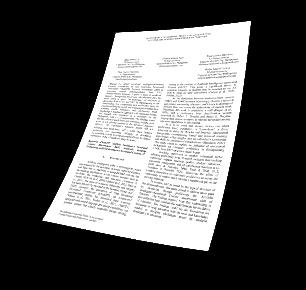
University freedom walls offer freshmen a platform for academic support and social connection. They serve as a space for sharing experiences and advice, from navigating university life to matters of the heart. However, a freedom wall has its icky side, overshadowing the reality that with just one flip of a post, it can become the breeding ground for the hatred that no one has to feel responsible for under such liberty of a user’s animosity–it heralds an imminent doom.
The Social Spiderweb
In every area of a student’s life, a circle of friends and acquaintances sets you apart in academic advantage in a university setting but given the different schedules and school-work situations, it could be too difficult to ask for help and support since some students may have varied classes to take, and thus, different classmates to meet each subject. This is where freedom walls become beneficial, it facilitates collaboration among students from distinct backgrounds and disciplines.
As freedom walls grant numerous ways to connect students academically, they also serve as a social outlet for students who are struggling. On its fun side, students are free to post jokes, and even love confessions that render freedom walls a place for making con-
nections and romantic beginnings. Pitfalls on Freedom Walls
In the advent of oversharing and expos ing oneself or someone, freedom walls can be a source of negativity among students. There are awful instances that posts shared on the freedom walls become too vulgar, mostly when they bring the intention of spreading slander directed at the university system, department, and student. With populous students added to the freedom wall, such posts exacerbate misunderstandings and prejudices among students and further worsen the clash of their perspectives. Despite being marked as improper, several posts in this category are not taken down from the platform immediately. This delay may cause social harm and embarrassment to users who are exposed and mentioned to such content.




Although interactions in freedom walls are like facing the two sides of a coin, it is still the student’s sole responsibility to control what they propagate. Creating a post is one thing, but how you react to it is another. After all, freedom walls are made to unify students and foster a community that strengthens bonds in building each other’s stories.




 by Farrah Luzon
by Farrah Luzon

Rated R
by Farrah Luzon
It was the wee hour of the night, and he was seated, finding the elaborate discussions of RRLs and his already-cold instant coffee a harmonious symphony, along with the crickets at night. Ethan found this scene rather comforting as he prayed with cautious focus, “It’s better to reference someone else than make it yourself.” It went on for minutes until he halted.
A sudden whisper in his brain stopped his momentum. What is he really doing all this for? He racked his brain, the push of emotions billowing him to the past. As influenced by his published research on a sister, he recalled gathering children in their community, grunting and sighing as he took his time concocting their well-deserved snacks. Another memory flashed; it was him and his laptop once again, bonding
with frantic clicks and a feverish, sickly body. It was almost considered the norm in the world of research: depriving oneself of their needs, sometimes wants, or sacrificing the lesser gain to set the stage as he seizes his breakthrough.
He darted his eyes back again to the monitor, his mind still clouded with the apprehension of a student-researcher unsure of the path laid before him. Doubt hangs before his eyes on a barbed wire, speaking to him as it asks to be freed by Ethan himself.
Ethan’s journey through the labyrinth of academia exemplifies the trials and tribulations that many students face in their pursuit of knowledge. While the university prides itself on fostering top-tier research education, the intricate relay of instructional information often falls


It is truly a spectacle to see people dab onto their sweats and hold on to their shirts when being put on the hot seat. The ultimate question is, what would USTP students prefer? As if being dragged out of submersion among the piles of mentally strenuous schoolwork, a USTP student’s saving grace is the warm envelope of a savory, cheap but equally filling snack. However, a knot on the forehead is inevitable when deciding what to eat. “Unsa atong i-snack?” “Ikaw bahala.”
If a certified trailblazer were to decide among all the appetizing spreads lining the cafeteria’s fringes, ranging from cracking crunchiness to oozing sweetness, one that rises above all is their very own Koikoi.
Only to be seen within the walls of innovation, this unique goody continues to cater to thousands of starving trailblazers, coming down from the fort’s classrooms and offices, both youngsters and adults alike.
Having this openly displayed and paraded by starving trailblazers all over the campus, it is a desirable munch-on
short of the grandiose claims. Navigating the convoluted maze between the fear of approaching professionals for guidance and the arduous path to success is an uphill battle.
Undeterred by the formidable challenges that peppered his academic journey, Ethan emerged as a tenacious trailblazer, undeniably reshaping the trajectory of his educational experience. In a landscape where the relay of instructional information often failed to meet the lofty standards set by the university’s commitment to top-tier research education, Ethan’s response was nothing short of transformative.
His keen recognition of the pivotal role that initiative plays for those navigating the complex terrain of academia prompted Ethan to take bold steps beyond the well-trodden paths of traditional learning spaces. Unfazed by the fear of approaching professionals and driven by an insatiable thirst for knowledge, he embarked on a person al odyssey, venturing into uncharted territories.
Ethan’s accolades speak volumes about his resilience and commitment to excellence. As a double gold awardee at a Practical Research 2 Research Sum mit, he emerged victorious despite the tooth-and-dagger challenges that often
when clawing at hungry tummies.
This USTP-certified delicacy is a coated egg, drenched in a hot mix made specially by the originals, topped off with a crispy bit of chicharon. Comparable to Kwek-kwek, a national street food snack, it leaves a taste of saltiness, a texture of creaminess; a drag from the usual aftertaste of the infamous Kwek-kwek. As stated by an avid Koikoi fanatic, “Koikoi is more ‘makabusog’ and worth the money.” It is a testament to its multifaceted nature; a fusion of culture and creative innovation. Beyond its steamy sauce and chewy star of the show, Koikoi exhibits the Filipinos’ creativity in acing the field of food innovation, challenging the margins of Filipino culture to add a page to the decades-long history and finally emboss its mark on the identity of Filipinos.
accompany the research journey. His journey bestowed upon him the wisdom of a true student-researcher, honing his critical thinking skills and transforming him into a visionary force in the realm of inquisition.
Armed with this newfound knowledge, Ethan stands as a beacon for fellow students, ready to share his experiences and insights with the entire student body. His journey is a testament to the transformative power of grit and commitment, proving that even in the face of adversity, one can emerge as a

 But of course,
art by Matt Abellanosa
But of course,
art by Matt Abellanosa
Lights on, or lights off? Love or money? Koikoi or Kwek-kwek?
With faltering fingers, his sweaty hands danced along the laptop’s keyboard aroused...for another Research Rated endeavor.
FEATURE 11
12 SCITECH




MUD THICK TOES The Challenge brought
by Torrent
Cats as students’ happy pill CAMPAWS
by Vic Orain
Swswswsws…
Sounds familiar, right? You usually hear this if a person calls a cat to pat it. You endlessly encounter cats around the campus like every corner in the university! And there is you, cannot resist but to adore them.
Pet’s invisible string, including cats, connected to its owner can have a significant impact on that owner’s mental health. Students occasionally pat the cats that roam around the building as it helps students cheer them up amidst struggling, which frequently occurs in the university. However, one male student shared his experience that stray cats may attack students. He shared his insights on them being a distraction due to their aggressiveness, behaviors, and noise.
Based on Psychology Today, for instance, those who own pets at home report lower rates of sadness and fewer symptoms of the illness overall yet not always applicable in the university. The university is also pet friendly, namely the stray cats roaming around the campus, providing solace in students that found them irresistible and cute but it is advisable to be vigilant from them due to how unpredictable their behaviour is. Moreover, eighty percent of participants reported feeling less lonely a month af-
ter obtaining a pet. Numerous students own cats in their homes and feel less lonely with their pets accompanying them.
“Every time I see a cat on campus, I have always wanted to bring them home,” a 12th grade student named Jazzel shared her feelings whenever they see a cat. Jazzel currently has nine (9) cats at their house, but She still wants to have more.
Furthermore, animals may stimulate our brains and produce neurotransmitters in a similar manner to newborns, said by Hal Herzog, a Professor Emeritus at Western Carolina University, which was the reason why students can’t help but love the pets wandering in the USTP-CDO campus. There are students who commented during an interview that they’re irresistible and cute even though they are snobs. “Animals that possess characteristics resembling those of human infants are generally deemed cute, namely the chubby faces and large eyes and things like that.” also said Herzog, a researcher that focuses on the psychological, cultural, and biological dimensions of our bond with pets.
Owning a pet, including cats, offers an opportunity to interact with other animal enthusiasts. Owners of
cats and other animals also share their experiences with others. Pets are great companions. They also provide emotional support and may try to distract you when you’re stressed, particularly on exam days in the university.
Furbabies are also excellent study partners, providing emotional support when needed. They can be cuddled up during work sessions or sleeping with you at night. They can help prepare for exams and midterms, making them a valuable study companion. Eileen Bona, a trained psychologist, founded Dreamcatcher Ranch in Alberta, citing the unconditional love animals provide. She believes that animals don’t know individuals with diagnoses or mental health issues, as long as they’re nice, and this can provide the opposite message about one’s self-perception. To simplify, the seemingly simple relationship between pets and humans goes beyond straightforward manners. They also provide benefits to their owners, making them excellent partners. Cats in the campus are not just stray cats, but animals that loved by almost all trailblazers. With humanity, how far is the limit of love between a pet and a human?
25 teams from Southeast Asia engage in UNESCO water confab
by Jeph Taruc
Twenty-five (25) teams from nine (9) different countries within Southeast Asia are chosen to participate in the UNESCO Water Resilience Challenge: Youth Action for Water wherein five (5) teams represent Indonesia, four (4) from Vietnam and Malaysia, three (3) from Cambodia and the Philippines, two (2) from Brunei Darussalam and Lao PDR, and one (1) team from Thailand and Timor-Leste, with the goal to empower young leaders to contribute their innovative ideas and become catalysts of change for water resilience within UNESCO-designated sights.
Team AquaGuardian Philippines utilizes a specialized Adsorption Filtration Process to successfully catch the microplastics and heavy metals, which centers on the water pollution problem in Palawan. Meanwhile, Ecosolvers from Timor-Leste aims the mitigation of water scarcity for the survival of Jaco Island’s indigenous deer population and wide biodiversity, that by implementing solar-powered distillation, it will create a consistent and reliable supply of freshwater which will help preserve the natural habitats and the island’s ecosystem.
UNESCO Water Resilience 2023 opening ceremony
On January 18, 2024, Maki Katsuno Hayashikawa, Director at UNESCO Multisectoral Regional Office said in her welcome speech during the opening ceremony that the Youth for UNESCO is not
just a priority group but a powerhouse of creativity and innovation and a source of relentless ideas. Moreover, Director of The Water Agency Gregor van Essen acknowledges the selected 25 teams joining the event, encouraging them to be the future water leaders across Asia.
Ryuichi Fukuhara, a Technical Advisor for Natural Sciences from UNESCO, emphasizes the UNESCO sites and its contributions to climate resilience and sustainable development, and the importance of Biosphere reserves, which shows a connection among sustainable development, climate resilience, and biodiversity conservation.
Training sessions with UNESCO experts
The representatives join the four trainings held by four different experts who shared their knowledge about various topics which include inclusive stakeholder engagement, IWRM as sustainable water management, climate mitigation, adaptation & resilience, and natured-based solutions for biodiversity & ecosystem.
Mr. Eugenio Fatima Lemos shares his expertise about Inclusive Stakeholder Engagement by contrasting a healthy and a damaged ecosystem with water scarcity, climate change, poor infrastructure, and population growth as primary issues within a community. By renovating natural reservoirs, establishing artificial ponds and reservoirs, and implementing tree planting and with the
cooperation of the residents, the local community will strive.
On the second training, Mr. Neil Andika in his lecture titled IWRM (Integrated Water Resources Management) as Sustainable Water Management, emphasized the profound impact of climate change on the water cycle and its importance to humans and the overall ecosystem. Moreover, Ms. Chong Khai Lin discussed during the third training about climate mitigation, adaptation, and resilience, which primarily focuses on the greenhouse effect created by carbon emissions that would have an impact on humans, and Ms. Duong Ngoc Duy Thu talks about Nature-based solutions for Biodiversity & Ecosystem where she explains how livestock, ponds, forests, and farms are interconnected.
Midterm Pitching
The twenty-five teams pitched their ideas to the experts, presenting diverse reflections about water resilience on UNESCO-designated sites and exploring different aspects of water management and resilience through the teams’ innovative technological solutions. After the presentation, the teams were given the opportunity to choose experts who would guide them in developing their ideas. The final pitching will occur on February 28, 2024.
concerns at the Freedom Wall as the rain the classes are only being cancelled after

in cities and local areas. This has taken a toll on not just the public sector but also on education. Cagayan de Oro City, the home of the University of Science and Technology of the Philippines, was under a moderate general flood advisory last February 9, including its nearby vicinities. The constant threat of flooding has been a major concern for health safety, and the setbacks to the productivity of the students and staff of USTP.
“In such instances where flooding on common grounds happens, it makes me feel like going to school puts our health, as well as our finances at risk,” Angel Rei Allonar, a grade 12 student, shared her bitter experience during the rainy season on campus. This implies that flooding is a distressful experience for students, posing a risk to health, including leptospirosis, dengue, and many more, and finances since heavy rains and flooding can either damage or destroy the student’s belongings, such as laptops and other valuable leaving them no choice but to spend money in repair or replacement.
Flooding can contribute to the counterproductivity of students, especially those who live far from the campus, which has a domino effect on the students’ academics and physical health–given the fact that some classes end at night. Such impediments to work and time management are experienced by both students and
staff of USTP. “But, the travel distance to get home takes me about two hours on average, so it accounts for higher safety and financial risk for my family.”
“Basically, our campus’ area is topographically low. In the river system, the area where our campus is built is part of the mouth of the river, a deltaic area.” In our interview, the geologist, researcher, and USTP instructor under the College of Science and Mathematics, Cristina Remotigue explained the factors that help trigger flooding on the campus. When an area is topographically low, it means that the land surface elevation is typically lower than its surrounding areas, forming a depression that accumulates water from above.
“Thus, it is swampy. It is a natural catch basin for water mostly from rainfall.” It was emphasized how the infrastructure becomes susceptible to flooding depending on its location, including its land surface features or topography. “The school must build an efficient mitigation infrastructure against flooding, we cannot divert the floodwaters because the area is highly urbanized and the city has already set a permanent outlet for the water.” Instructor Remotigue said.
The health and environmental implications of baha demonstrate the interconnectivity and interdependence of human and ecological systems. Although natural disasters may be uncontrollable, their effects on humans and the environment can be mitigated through sustainable interventions and practices. This requires the action and collaboration of stakeholders such as the government and society in facing multifarious problems brought by flooding, where everyone has a role and responsibility to contribute.
 by Lyza Bernal
Art by Rafael Galvez
PHOTO BY KEN TUPINO, PAULINE SANORIA, MIGUEL ESTENZO
by Lyza Bernal
Art by Rafael Galvez
PHOTO BY KEN TUPINO, PAULINE SANORIA, MIGUEL ESTENZO

GoogleMeet Me at Midnight
Students of University of Science and Technology of Southern Philippines (USTP) are no stranger to lack of sleep, with its popularity going up in recent years and calling it the ‘Anti-Sleep Culture’, but not without reason. Some students tend to stay up late to finish their schoolworks or maybe study for their tests. However, based from a study of Hershner and Chervin, lack of knowledge about its effects could potentially harm those who are always sleepless, which are backed by evidence such as hosting adverse effects on their physical and mental being. The dangers it shows are often overlooked and unrecognized. Consequences of such things are adding burdens to existing diseases. Highlighting the value of sleep quality evaluations as a crucial early risk indicator can lower the occurrence of numerous morbidities.
One interviewed student also commented and shared his opinions that mostly students lacks management in their time due to dependence on cramming, distractions, and procras-
tination and instead of finishing their work, they tend to forget it and finish it at the last minute when they realize that they wasted their time, they aren’t able to do any productive work and this will become a bad habit that will continue to go on. Also they tend to use their sleeping time for their own merriment and further cramming. Another thing is how students share their experience and promote the unhealthy habit of lack of sleep firstly in their friend group and that friend group would be the fuel to the fire that would start the trend to other people.
According to Centers for Disease Control and Prevention (CDC), the major change from adolescent to adulthood occurs throughout the college years. This shift is linked for many people to insufficient sleep and excessive daytime sleepiness. Class schedules are frequently set without taking the circadian rhythms of young adults into account.
Due to the fact that students frequently utilize drugs and technology that impair both the quantity and quality of their sleep, poor sleep hygiene is widespread. Sleep deprivation may have negative

effects on mood control, driving safety, and academic performance. Even when they get enough sleep, sleep issues might cause students to still be drowsy.
In essence, there is a direct connection between adequate sleep and its negative effects meanwhile excessive sleep and its negative effects are more indirect.
From International Classification of Sleep Disorders (ICSD-3), lack of sleep is a curtailed sleep pattern that has continually existed for at least three months for most days of the week, together with problems of sleepiness during the day.
And with that, Trailblazers or simply the University students have a mantra, ‘I’ll sleep when I’m dead’ but actually it’s just a justification for their poor sleeping habits, to add with their widespread acceptance of lack of sleep.
Also from Douglas Research Centre, common symptoms of sleeplessness include weakness during the day, fatigue, sluggishness, and intellectual difficulties. These issues are sometimes misdiagnosed as life concerns including family or social issues rather than the more fundamental cause of insufficient sleep. Medical practitioners must un-
doubtedly make sure that their patients are informed about typical causes of sleep disturbance, such as shift work or jet lag. More importantly, though, we must address patient attitudes on the detrimental impact of insufficient sleep on health.
Knowing the importance of sleep is for one to live healthy. Being fit mentally and physically ensures that we are away from succumbing to illnesses. ‘Your Health is your Wealth’ they say, and it’s absolutely right. Once death is knocking at you, that’s when you realize how significant a single action you overlooked can be. Sleeping is a way for the body to relax, but without adequate sleep, the outcomes and consequences are dire. Being ignorant to such matters and considering it trivial might have been the preliminary actions of people that joined the trend of ‘No Sleep Culture’ and although the University students who are no stranger to this, can’t help but stay up late at night to finish their projects and such.

Rushin’ Roulette
The mixing downsides of matching fast foods
Nowadays, students are increasingly seeking quick, affordable lunch options, with mixed-meal meals at fast-food restaurants becoming popular in accordance with the research of Iran Red Crescent Medical Journal. It’s quick, fast, and cheap; it also tastes really good! Students that are interviewed also agreed on such things. However, according to Cleveland Clinic, the nutritional value and long-term health effects of these meals are questioned, and if burgers, french fries, burger steak, peach mango pie, and greasy breakfast sandwiches become centerpieces of your diet, they could take a serious toll on your health although according to a dietitian named Nancy Geib, an occasional fast food meal isn’t worrying.
With how close various establishments and malls are around University of Science and Technology of Southern Philippines (USTP), it’s easy to understand how many students resonate and agree with its convenience and cheapness compared to other options. One student even said in an interview that it was budget friendly and affordable with
how a hundred pesos could offer a complete meal plus the taste and options. Furthermore, based on Public Health Nutrition, rather than emphasizing the quality and nutritional value of their cuisine, many fast food businesses prioritize process and efficiency in order to provide meals quickly, cheaply, and reliably. Mix-and-match meals, such as burgers, fries, chicken nuggets, and soft drinks, are popular among students due to their affordability and convenience, allowing them to enjoy a quick, satisfying lunch and study sessions. In addition, mix-and-match meals allow students to customize their orders to meet their preferences, and appetites, without going over budget. However, from Joel Fuhrman, although these meals offer convenience, concerns about its nutritional value and potential health risks are evident such as excessive consumption of heavy calorie, saturated fat, sodium, and sugar-laden menu items can lead to weight gain, heart disease, and diabetes. Mixing and matching foods especially from fast food restaurants can lead to students consuming harmful, high-calorie, low-nutrient meals, negatively impacting their overall health and
wellbeing, with various researches backing it.
Mix-and-match meals offer students affordable dining options, but it’s crucial to balance price and nutrition since it’s like what they say, your health is your wealth. One can include healthy food choices in their diet namely fruits, vegetables, whole grains, water, and grilled or baked foods. Also, fast-food companies can promote healthier eating habits by offering nutrient-dense menus, clear nutritional information, and incentives, empowering students to make informed food choices and improve overall health outcomes. A healthier and more satisfying lifestyle might result from finding a healthy balance in the mix-and-match method. In summary, although the mixand-match combinations present a multitude of opportunities to improve our lives with it being popular among students for their variety, affordability, and ease of dining out, it also carries some health risks. By considering both cost and health, students can make informed dietary decisions that promote academic performance and overall well-being.
The Official Publication of University of Science and Technology of Southern Philippines Senior High School SCiTECH 13
PHOTO BY JEWEL DAGUINOTAS
by Vic Orain
by Vic Orain
Art by Matt Abellanosa
Photo
by JEWEL DAGUINOTAS

SocMed Likay
Solution from Addiction
Teenagers who spend more than three (3) hours a day on social media are at higher risk of mental health problems. Based on King University, the best way to minimize the usage of social media is to set limits on the amount you spend on technology.
SoLi, or Social Media Likay, is an innovative product that four (4) students from the Department of Information Technology won in Sinatech, an event of the Student Council of Information Technology and Computing (SCITC) last January 2024. The team members are Jane Faith Labrador, Mark Vincent Bunjan, Adelyn Ayana, and Nathan James Dela.
SoLi is a mobile application that will bring out meaningful social media browsing and enforce a well-balanced social media usage that will not hinder study habits. The app also aims to enhance students’ lives by promoting healthy social media habits and fostering a beneficial learning environment. This is similar to AppBlock, Flipd, Freedom, and SelfControl, which can also be found on the Google Play Store and Apple App Store, but SelfControl can only be downloaded for MacOS. However, the app has a monitoring system, including usage. The settings include content management, which
are educational, motivations, and to-do tasks; embedded apps; and communities. It has a key feature that is not common to other products, which is the safety lens. The safety lens can be activated from the blocking mode menu, which allows users to scroll a certain amount of content using social media applications. The app they are using will automatically terminate if it goes beyond their screen time, scroll counts/heights and will pop up a reminder for their tasks as well as motivational quotes.
“During the product ideation phase, our main challenge was convincing people of our app’s efficiency and relevance in a society heavily reliant on
social media,” Ms. Labrador shared. She also shared that they were inspired to continue the idea as they believe their application could empower students to maintain focus on academics, aligning the university’s goal to provide quality education while addressing students’ social media addiction.
The team has plans to implement the application and collaborate with educational institutions to tailor features specifically for academic needs. SoLi is not an app, but a solution for social media addiction.
Ctrl+C, Ctrl+Cheat? Keeping an Eye on AI
by Allan Jumuad, Jr.
Artificial intelligence (AI) is rapidly transforming diverse landscapes, and education is no exception.
From conversational chatbots answering student queries to algorithms tailoring learning experiences, AI’s potential to personalize and optimize education is undeniable. However, as it permeates the educational sector, it raises critical questions on the shaken walls of academic integrity.
Enter Prompt: Write my Essay Assignment…
AI has always begun promising, especially to the benefits it could cultivate in efficiency. AI can handle administrative tasks like grading essays, scheduling classes, and providing personalized feedback, freeing up educators’ time for more meaningful interactions with students.
A 2022 report by the World Economic Forum estimates that AI could automate up to 49% of an educator’s workload by 2030. According to Leedy and Omrod in 2013, AI also streamlines research processes by contributing to literature reviews, data analysis, and drafting research papers, benefiting both students and faculty.

3 billion users are using Google Workspace across the globe.
However, a TED Talk by Oscar Shwartz discussed a fundamental question, “Can Computer write poetry?”, Yes, it can, in fact, it is almost indistinguishable from the works of Maya Angelou as studied by Nils Köbis and peers, and so the blurring line between AI-generated and human-created content raises ethical concerns especially on the hallowed grounds of the academe.
Generative AI, which could compose a 500-word essay in mere seconds, threatens the very foundation of authenticity. According to the Neuroscience News, linguistics experts struggle to differentiate AI-generated content from human writing.
Peter Eshun and peers in their study said the issue of academic dishonesty and integrity has been extensively explored in the literature, however, with the emergence of generative AI such as ChatGPT, Waltzer and peers states that this issue has been further exemplified posing challenges and raising worries about students’ overreliance on AI tools. This dilemma does not exclude the University of Science and Technology of Southern Philippines Senior High School
High School department. With ChatGPT merely at fingertip’s reach students could utilize the platform to to write their assignments. Concerning the fact that the school is a premiere research institution, who knows that some of the student’s research papers bypassed this flawful detection and even made it among the esteemed top?
“I think all of us use ChatGPT, even me,” Franz Ignacio, a grade 12 student, mused.
“I think it’s okay to use ChatGPT, as long as you don’t directly copy and paste what it generates and take it as inspiration of a sort.” Simone Banluta, another grade 12 student, recalls her experience as a secretariat and the platform.
“When you know you’ve done your best on an essay and you find out your classmate utilized ChatGPT and had almost the same score as yours or even higher, you’ll find it very unfair; it’s sad,” Herbie Labaya, a Grade 12 student, added.
With AI becoming more sophisticated by the day–the perpetuation of authenticity is at stake. This means students can submit AI generated content without
G ka na ba?
facing repercussions and would be graded at face value. Integrating AI responsibly in schools requires a multifaceted approach. Clear guidelines are needed to ensure AI in education is used fairly, transparently, and ethically. The European Commission’s “Ethics Guidelines for Trustworthy AI” offer a valuable framework. There must also be interventions done to empower teachers in facing this battle. Although yet to be studied, research should improve and seek to determine if educating educators with AI discernment skills will revolutionize the system. But whatever AI is perceived to be, it all ended up as a double-edged sword in which humans sharpened. This narrative tells that what humans create is neither inherently good nor bad; it is how it is utilized that will dictate its nature. Until regulations are developed on artificial intelligence, we should keep a keen eye on it.
GDSC USTP holds ‘G Me More’ to offer Google Workspace
by Jewel Daguinotas
Google Developers Student Club USTP (GDSC USTP) conducts an online event and workshop ‘G Me More!’ on December 10, 2023, to introduce Google Workspace for enhancing online learning productivity.
The said event also presented the tricks and tips on using Google Docs, Google Sheets, Gmail, Appscript, Google Labs, and other apps provided by Google Workspace. It was also partnered with City Scholars Society in the university which led to over 100 participants in the live and zoom event.
One of the participants from Senior High School shared its testaments on the event, “Gina-explore ka nila sa mga products ni Google and gina-explain sad nila kung unsaon siya pag use especially sa students, gihatag sad silag tips on how to make your work better bitaw.”
The event consists of five (5) sessions hosted by the chiefs of each department, including the former lead of the organization.
Another student shared that he enjoyed the event, especially that they show understandable demonstrations during the sessessions, and it was also interactive and very helpful for their academics. Furthermore, the organization aims to promote the best solution for collaboration and interactive learning provided by Google. They also aim to lessen the technical difficulties encountered by the students, especially that it is one of the apps that can be utilized by students for their academics.
The Search is Over
An organization mobilizes online youth for climate action, raises a campaign to utilize Ecosia as the default search engine as they plant and grow trees for search. But is it a sustainable solution for environmental issues?
Ecosia is a non-profit company and climate advocates that plants and protects trees, and founded by Christian Kroll. They already planted more than 160 million trees in over 35 countries and it continues as the search still goes on. Reforestation is their core project, it serves a positive impact on the environment in terms of air and water quality. According to One Tree Planted, “By planting trees in areas that have been degraded or deforested, reforestation helps the environment by guaranteeing, or accelerating the re-establishment of healthy forest structure by regrowing the forest canopy and preserving biodiversity within the ecosystem.” It is already enough to be said to be a sustainable solution. There are students across the globe encouraging their fellow students to make Ecosia as the default search engine, and that includes University of Science and Technology of Southern Philippines (USTP), University of Philippines (UP), Mindanao State University (MSU), and Gusa Regional Science High School (GRSHS-X). Over 25 countries have already used Ecosia as their primary search engine. The campaign is to widen the audience and people to become climate action activists, which connects the main objective of Mundomuna.
There are more than 70 active projects and more 35 countries involved, including the Philippines. The country has already more than 1 million trees planted since 2020 and creates agroforestry systems for smallholder farmers. The trees are totally helpful to the country as it reduces erosion and floods that usually occur in the country. One of the problems in the Philippines is related to flooding, especially during typhoons as the country is located near the Pacific Ocean which is considered a typhoon alley. The Department of Environment and Natural Resources mentioned that planting trees helps recharge ground water supply, prevents transport of chemicals into streams as well as prevents flooding.
As we aim for a better quality of environment for the next generation, we will make it earth as our first priority, Mundo muna.
14 SCITECH
Cerna.
by Jewel Daguinotas Study shows that the Philippines ranked top number one (1) in terms of social media users aged 16 to 64, which is the usage that leads to addiction that becomes one of the complications in the country.
Mundomuna
by Jewel Daguinotas
over
Source: Google for Developers

Athletes qualify to Regional Meet 2024

USTP-SHS Men’s Basketball falters grip on finals berth
by Carlyn Catane


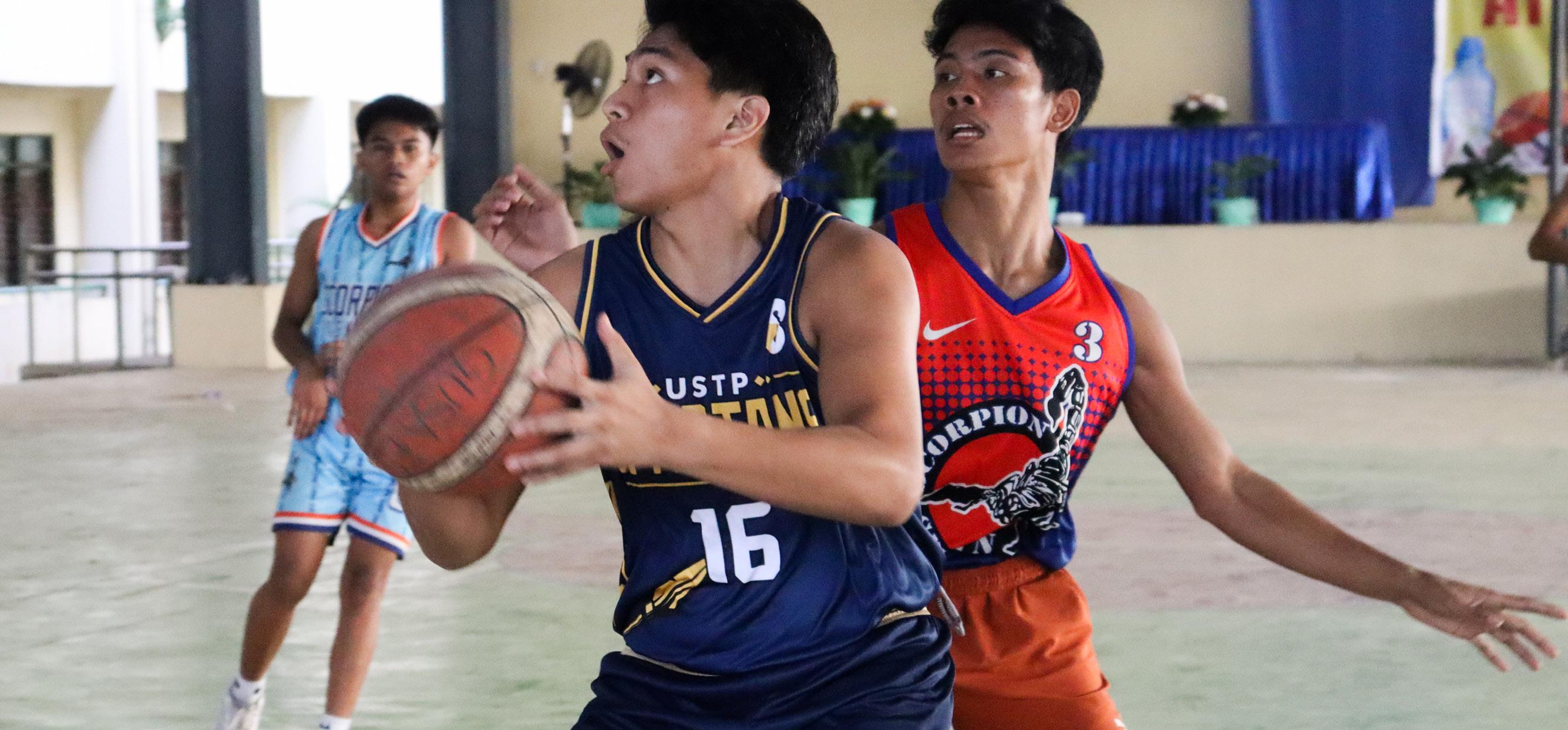
The men’s basketball team of the University of Science and Technology of Southern Philippines Senior High School (USTP- SHS) displayed a rather rough defense with only three days to prepare in a winning attempt against the Capitol University Basic Education Department (CUBED) but fell short for the Finals berth, 33-58, at the 2024 District Athletic Meet of the East one, District Two school of Cagayan de Oro City last Jan 26.
However, the men proved victorious against Cugman National High School (CNHS) in the latter match for the
Semi’s, 64-59, despite entering the game with faltering confidence due to the lack of training induced by their busy academic schedule like their fellow athlete Spartans in the different sports.
“This is the first win for the USTPSHS men’s basketball team since their debut game last year,” Coach Warren of USTP-SHS men’s basketball praised as he referred to their win against CNHS.
The men used the underestimating eyes of CNHS hoopers to their advantage as they leveraged their way through the second quarter and all throughout the game and added to their superb communication within the team and team

Veteran’s Wit
A veteran’s expertise will always prove to be on top.
Most recently a Batang Pinoy qualifier for chess, Joseph Alexis Dela Rama from the University of Science and Technology of Southern Philippines Senior High School (USTP- SHS) trumped the not long past 2024 District Athletic Meet in chess last January 25 at East One, District Two schools in Cagayan de Oro City despite having no time to practice his skills due to a rather tramped finals schedule.
The January 15-17 USTP-SHS’ final term examination hindered Dela Rama’s availability to train and prepare for the meet. However, both his local and national escapades advanced to be more than enough to powerhouse the USTP-SHS.
“ These experiences are the only ones that helped me win the District Meet,” Dela Rama mentioned as he referred to his past chess involvements.
Dela Rama has went on to triumph multiple chess tournaments as he began his journey way before. He has qualified for regional tourneys
tional competitions like the 2017 Shell National Youth Active Chess Grandfinals, the National Youth and Schools Chess Grand Finals in 2019, and the National Age Groups several times with the 2023 Batang Pinoy being his most recent national experience.
To serve as further practice and to sharpen hid mind, Dela Rama also joined local tournaments held here in Cagayan de Oro with most of it at Limketkai Malls.
The pro’s wit in the board game proved no need for warm-ups as he went on to crumple the players from the hotshot schools of Capitol University, Regional Science, Christian Academy, Lapasan National High School, and more only to come out on top.
Not only did he bag the district win but he will soon go on to represent both the university and the district in the upcoming Division Meet of the city where he will be countering even bigger players of bigger institutions.

dynamics.
Albeit, their winning advantage over CNHS became their losing point as they dueled and lost against CUBED for their second game.
Miscommunications with the referee lead to further misunderstandings within the team and eventually softening their previously strong team dynamic as the gap between CUBED and the Spartans widened in the first quarter.
However, the Spartan cagers stood strong in giving a good game for their CUBED opponents as they led their standings on a back and forth running lead till the third quarter, 22-35.
Unfortunately, CUBED fully gained their momentum as they entered the fourth quarter and totally hindered the Spartans from further gaining an upper hand as they bagged the Finals berth by a huge 25 points margin.

Spartan Spikers suffers setbacks against Capitol University Basic Education
by Christopher Alga
The USTP-Spartan men’s volleyball team faced defeat at the annual District Athletic Meet 2024, where they encountered Capitol University Basic Education. The final score of 17-25, 9-25 favored CUBED, whose teamwork and dedication secured them the win against the Spartan spikers. The Spartans struggled to resist the relentless attacks from Capitol University and found it challenging to limit their errors, which contributed to CUBED’s victory. The match took place at the Capitol University Basic Education campus, last Janu-
Coach Josh Galban led the USTP-Spartan men’s volleyball team onto the court, comprising Chad Pallugna, Christian Sayson, Sean Kilat, Reign Perez, Allen Piamonte, and Gab Rodriguez as the starting six players. The first set witnessed a back-and-forth exchange of points, with Chad’s strategic plays to Kilat and Perez briefly boosting USTP’s momentum. However, CUBED’s relentless determination to control the ball led to Spartan’s downfall, culminating in a loss in the first set with a score of 17-25.
As the match advanced to the second set, CUBED’s performance remained consistent, primarily driven by their service aces and targeted attacks on USTP-Spartan players.
Despite Spartan’s efforts, they
struggled to regain control of the game, leading to their defeat in the District Athletic Meet.
“We need long-term training, and compared to other schools, we lack experience in such competitive events. Also, we lack exposure to the big leagues, and we need team chemistry,” said Chad Pallugna, the USTP-Spartan men’s volleyball team captain.
Looking ahead, the USTP-Spartan team is gearing up for the university-wide intramurals, where they will represent the Senior High School department against the colleges department of the university. With lessons learned from the District Athletic Meet, the team is determined to improve their skills in the upcoming tournament.

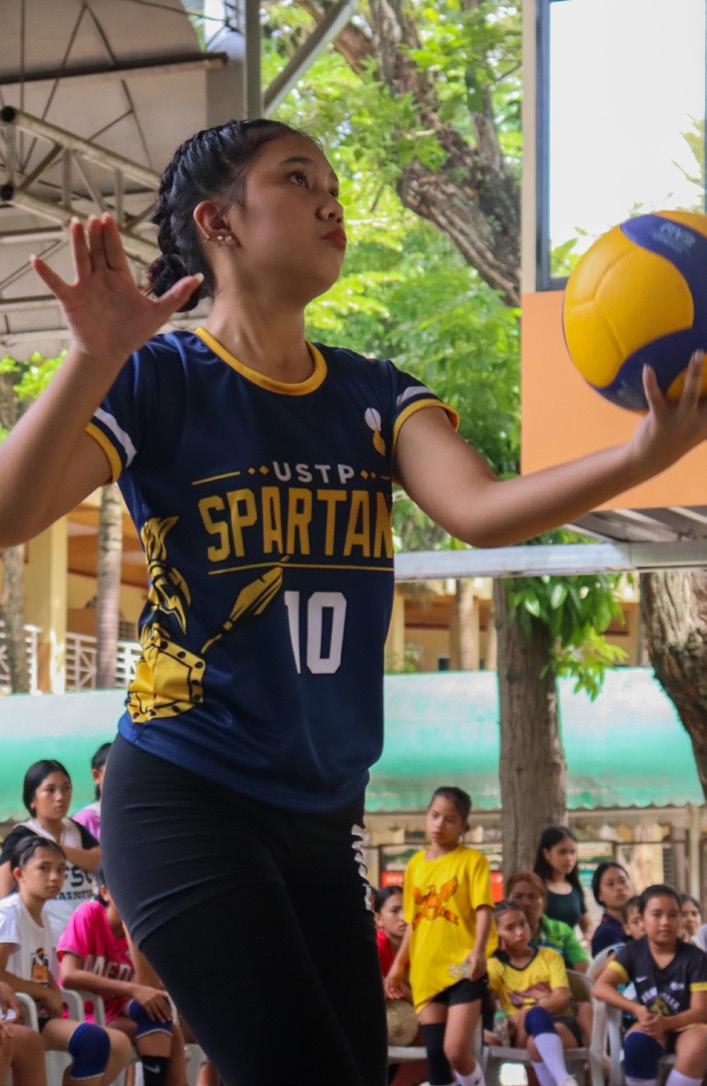

Spartan Badminton team faces tough opponent in District Athletic Meet 2024
by Christopher
The courts were alive with the swift movements and rallies of the recent Badminton District Athletic Meet 2024, where the USTP-Spartan badminton team demonstrated their badminton skills amidst fierce competition. Despite their best efforts, the team faced setbacks in both singles and doubles matches. In the singles category, John Dave Fuentes and Timothy Sevillena, representing USTP-Spartan, played in a hard-fought battle against opponents from East Gusa National High School. Fuentes displayed great agility and determination, but fell short with a score of 15-21, 18-21. Similarly, Sevillena showed his badminton skills on the court but was unable to secure a win, facing defeat with a score of 17-21, 11-21. Despite their loss, both players portrayed commendable sportsmanship and resilience. The doubles category brought a glimmer of hope for the USTP-Spartan team as Emilio Briones and Brian Gacrama stepped on to the court. Their match against Cugman National High School was a display of skills and teamwork, with powerful smashes and strategic defense earning them a victory with a score of 17-21, 21-10, 21-17. However, their journey took a different turn in the subsequent match against Gusa Regional Science High School, where they faced a tough opponent. Despite their best efforts, Briones and Gacrama were unable to secure a win, losing with a final score of 21-15, 21-11. Amidst the defeats, the USTP-Spartan badminton team found solace in the experience gained from participating in such a competitive event. For many of the players, this was their first time competing in the District Athletic Meet, and despite the outcomes, they embraced the opportunity to test their skills and grow as athletes.
Coach Rhea Quiboy expressed pride in the team’s performance, emphasizing the importance of resilience and learning from defeat. Despite the setbacks, their passion for badminton and commitment to improvement remain high, setting the next training for a promising future on the badminton court.


Capitol University outplays USTP-SHS Women’s Volleyball team in District Meet
by Christopher Alga
The Spartan Women’s Volleyball Team face against Capitol University Basic Education in a recent District Athletic Meet volleyball match. Despite their efforts, they fell short with a score of 5-25, 8-25, at the Capitol University Basic Education campus on January 25, 2024.
Capitol University took an early lead due to errors from the USTP team. Capitol University capitalized on the USTPSHS’ mistakes and scored points, gaining momentum with a string of service aces.
Players from CUBED demonstrated excellent teamwork, effectively communicating and coordinating their movements on the court. Meanwhile, the USTP team struggled with their teamwork, showing a lack of cohesion and coordination.
As the game progressed, Capitol University continued to dominate
maintaining their lead with consistent scoring. Despite efforts from USTP, their lack of preparation for the District Athletic Meet became apparent, as they failed to effectively communicate and execute their plays.
Capitol University’s teamwork and preparedness secured them the victory, while the USTP team was left to reflect on their performance and areas for improvement moving forward in the tournament.
The Official Publication of University of Science and Technology of Southern Philippines Senior High School
by Carlyn Catane
Alga
Chess (Male) Joseph Alexis Dela Rama Grade 11 - Empathy
Table Tennis
Bethel Joyce Sadora Grade 12 - Loyalty Gymnastics Mary Hyacinth Zamora
Grade 11 - Resilience
Spartans Basketball Team Captain Kerk Nhiel “Kovie” Garcia (16) defends the ball guarded by Daquio (3) on victory against Cugman National High School advancing to semifinals on January 25, 2024 at Gusa Elementary School Basketball Court.
PHOTO BY FATIMA TORREMOCHA
POINT
takes first point against defending court Capitol University Basic Education Department (CUBED) via service ace. PHOTO BY FATIMA
CAPTURED VICTORY. Representatives from the University of Sciencce and Technology - Senior High School (USTP-SHS) competes at the East City Central School in the chess division of District Meet. PHOTO BY SOFIA MORENO
ONE. Eurika Kempis (10)
TORREMOCHA
SpORTS 15 National chess player powers USTP-SHS, bags District Meet
by Carlyn Catane
Years of proficiency in her hands as she duels for the last time, carrying the emblem of the University of Science and Technology of Southern Philippines Senior High School, BethelJoyce Sadora fell short to bring home the bacon. One of USTP- SHS’ players for the 2023 Batang Pinoy, Sadora humbly capped off her last participation in the tournament as although falling short to triumph, she placed her name in the top 32 for table tennis and played with no regrets at the homecourt of Ayala Malls Manila Bay, Paranaque last DecemberSadora17-22.began her Batang Pinoy pad- dlingjourney way back to 2016, where she was just at the age of nine to 10 and featured her name at the city of Tagum and Oroquieta where she bagged a bronze. She was then part of the Mindanao Qualifying for the Nationals and absolutely gave a show as she won and got the chance to play at Baguio City where she finished top eight as such a young age. Thus, yes! You can absolutely say that the girl is nowhere near a novice in the Batang Pinoy league as she once again returned to Tagum City for another bronze medal and even went on to conquer the Palawan games. However, for her last Batang Pinoy match as she soon exceeds the age limit, Sadora humbly capped it off despite reaching for the stars due to academic workload being in the way to fully pour out her focus on trainings and practice.
USTP SHS paddler fall short for BatangPinoy medal

Sadora’s quest for a medal in her sixth and last Batang Pinoy became a game of cat and mouse on all her five face-offs as she went on and off from winning, eventually landing on the top 32 for her category. The grade 12 paddler first lost in her premier game against Melaine Galeon from Cebu City with a standing of 0-2 and with a score of 7-11, and 9-11. However, in a hopeful attempt to gain the stance and momentum, Sadora demolished Candon City opponent Jasmin Mecose with a turned table standing of now 2-0 via 11-1 and 11-8 scoring and earning her name as second in the bracket for the first round.
SPORTS: USTP-SHS Men’s Basketball falters grip on finals berth page 15

Sadora’s quest for a medal in her sixth and last Batang Pinoy became a game of cat and mouse on all her five face-offs as she went on and off from winning, eventually landing on the top 32 for her category. The grade 12 paddler first lost in her premier game against Melaine Galeon from Cebu City with a standing of 0-2 and with a score of 7-11, and 9-11.
However, in a hopeful attempt to gain the stance and momentum, Sadora demolished Candon City op- ponent Jasmin Mecose with a turned table standing of now 2-0 via 11-1 and 11-8 scoring and earning her name as second in the bracket for the first round.
The Spartan escaped off a tight fight against Ashley Dizon of Angeles City by a 3-2 gap of 10-12, 11-7, 6-11, 11-6 standings to proceed to her top 64 game where she victored contra Vhernalie Lim from Quezon City with a standing of 3-0 and scored of 11-5, 11-9, 11-7.
Although shooting for the stars, Sadora capped her title in the top 32 game as she lost against Danaia Erica Reblora from Pasig City with a standing of 3-0 and a score of 11-13, 6-11, 9-11.
Despite the rather unsatisfacto- ry ending, Sadora has no regrets for the end the results of her last Batang Pinoy.
“ Overall, I had no regrets,” Sadora mentioned as she says goodbye to her Batang Pinoy journey.
WHAT’S INSIDE
CHECK IT OUT FOR MORE SpORTS













 by Mary Allaine Cabot
by Mary Allaine Cabot























 by Allan Jumuad, Jr.
by Allan Jumuad, Jr.























 by Farrah Luzon
by Farrah Luzon




 But of course,
art by Matt Abellanosa
But of course,
art by Matt Abellanosa




 by Lyza Bernal
Art by Rafael Galvez
PHOTO BY KEN TUPINO, PAULINE SANORIA, MIGUEL ESTENZO
by Lyza Bernal
Art by Rafael Galvez
PHOTO BY KEN TUPINO, PAULINE SANORIA, MIGUEL ESTENZO



















